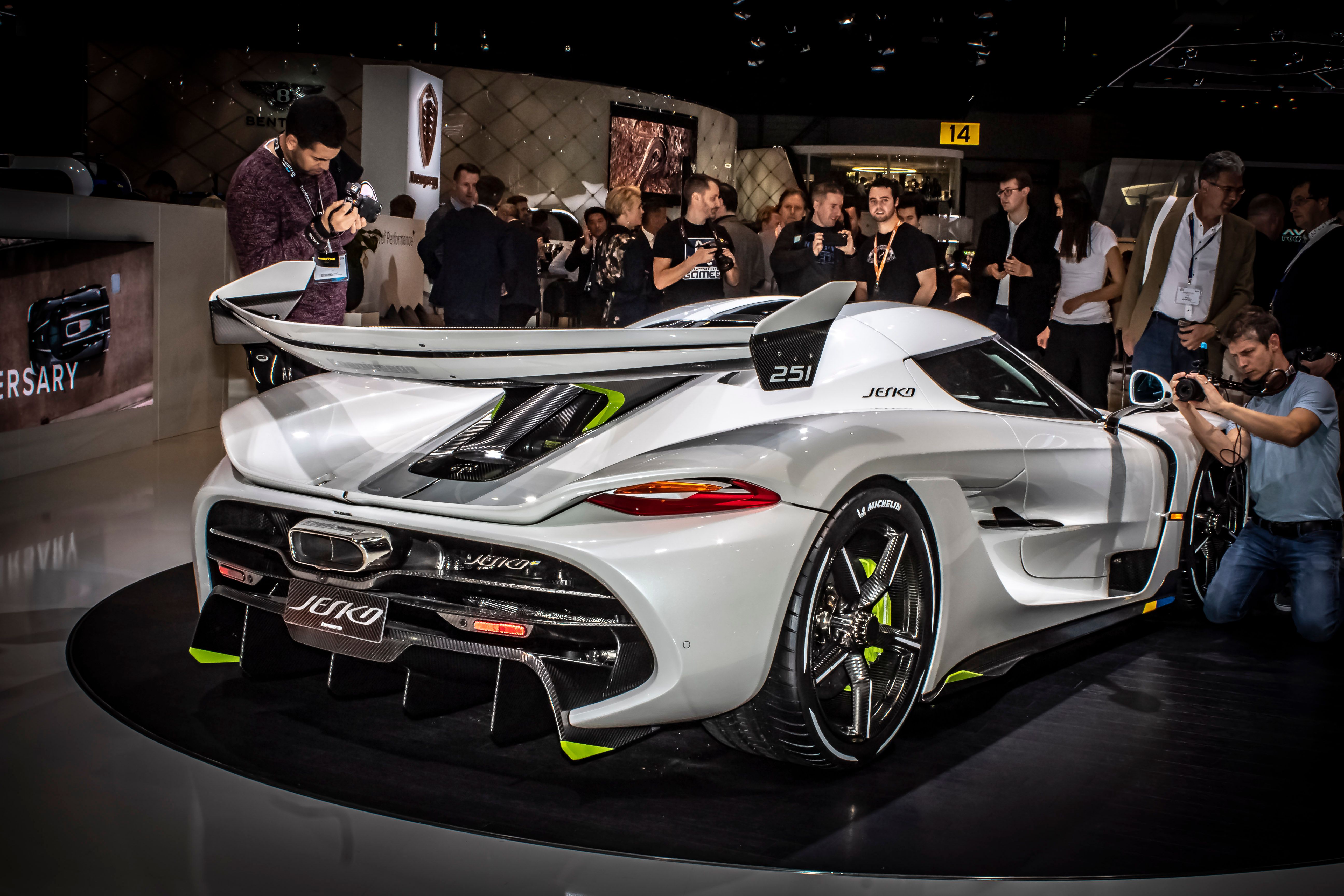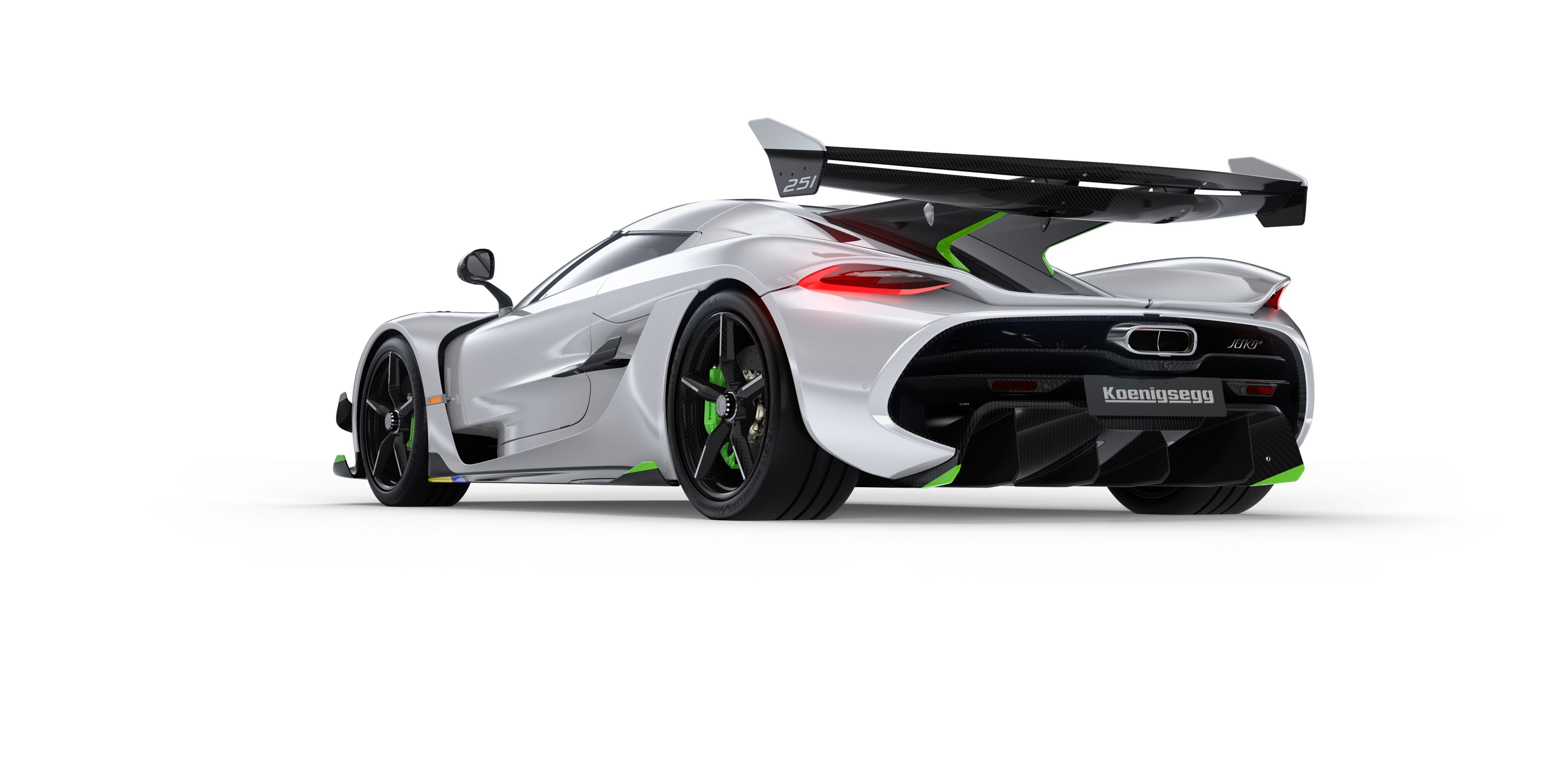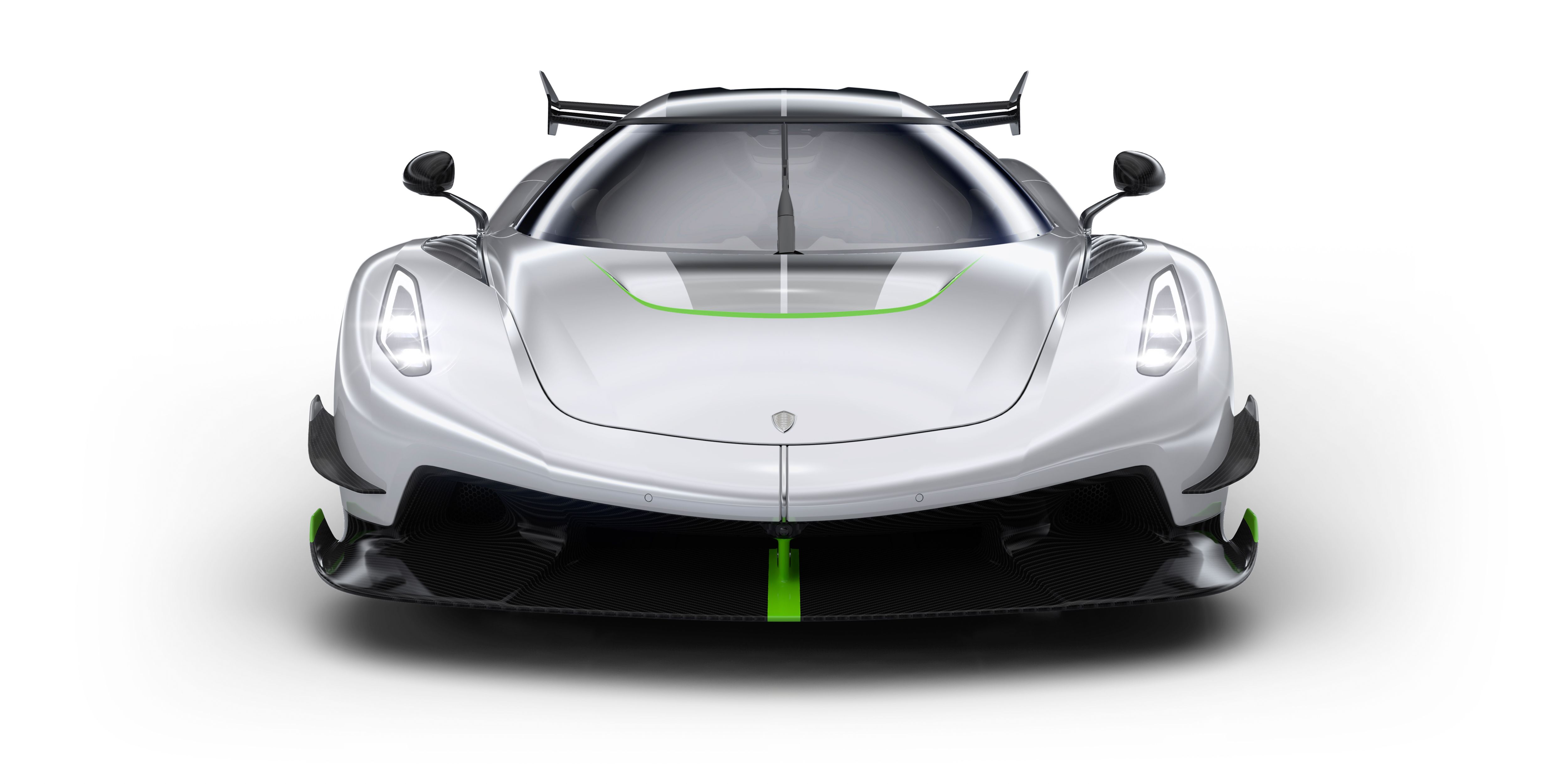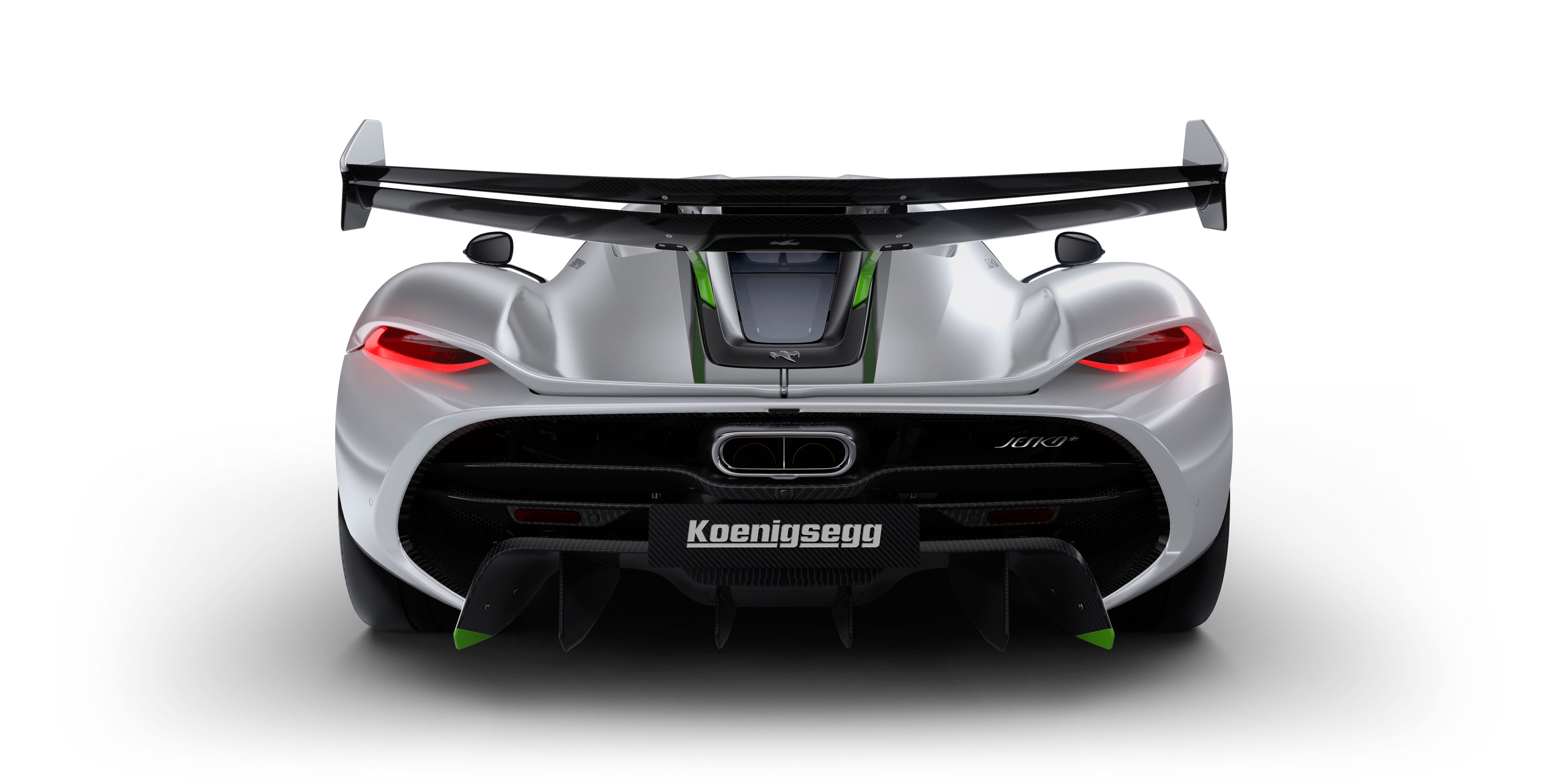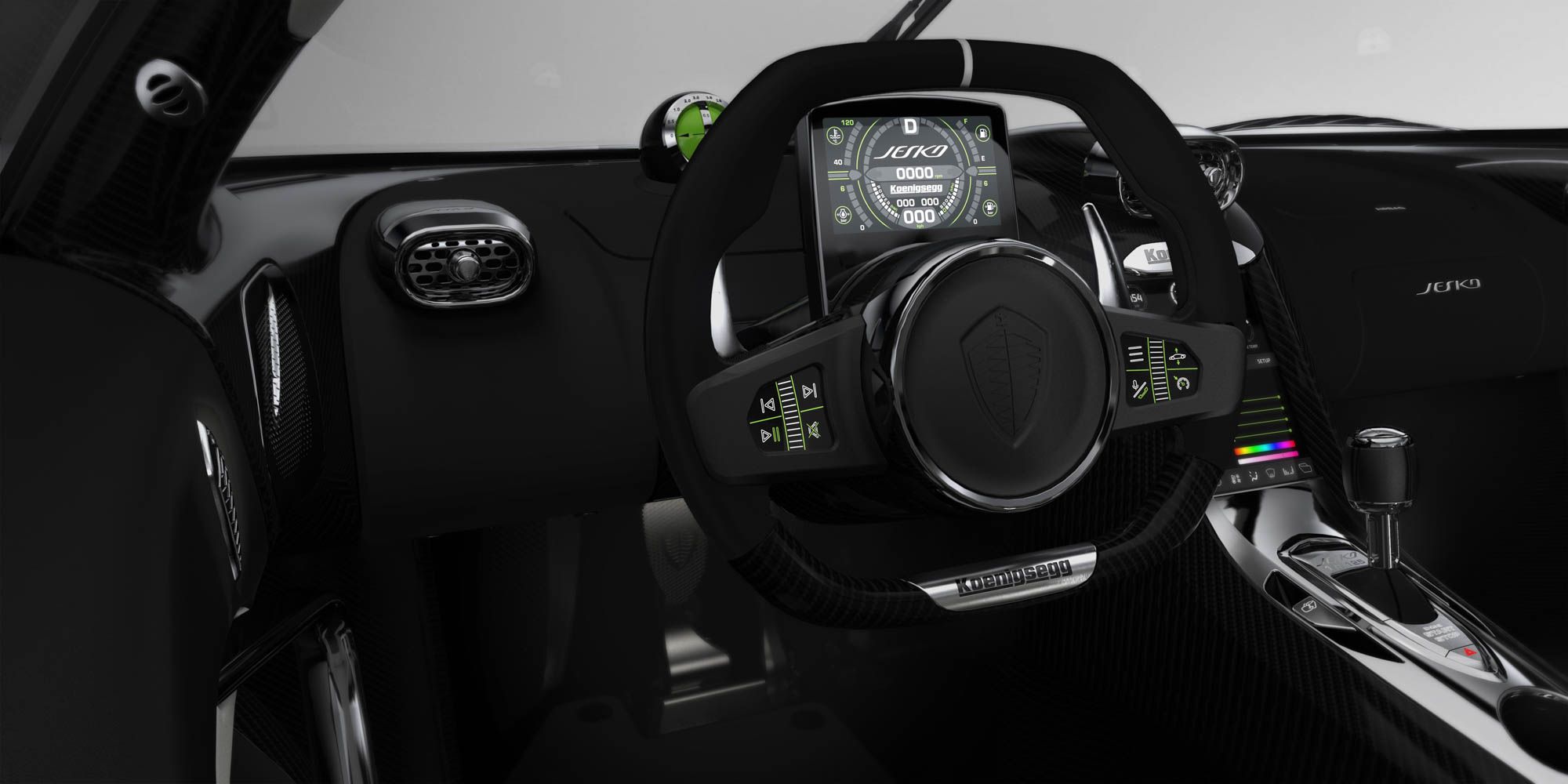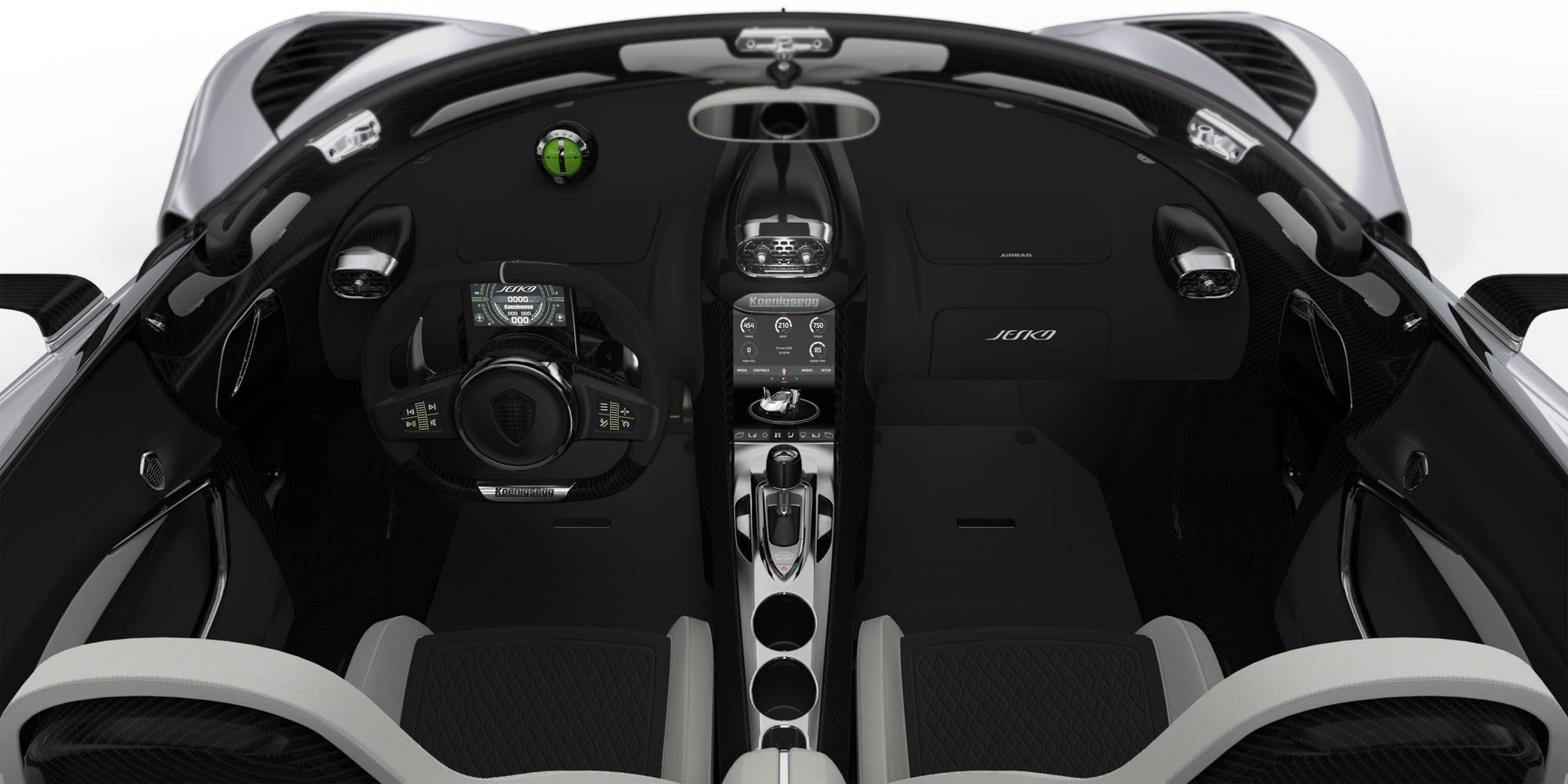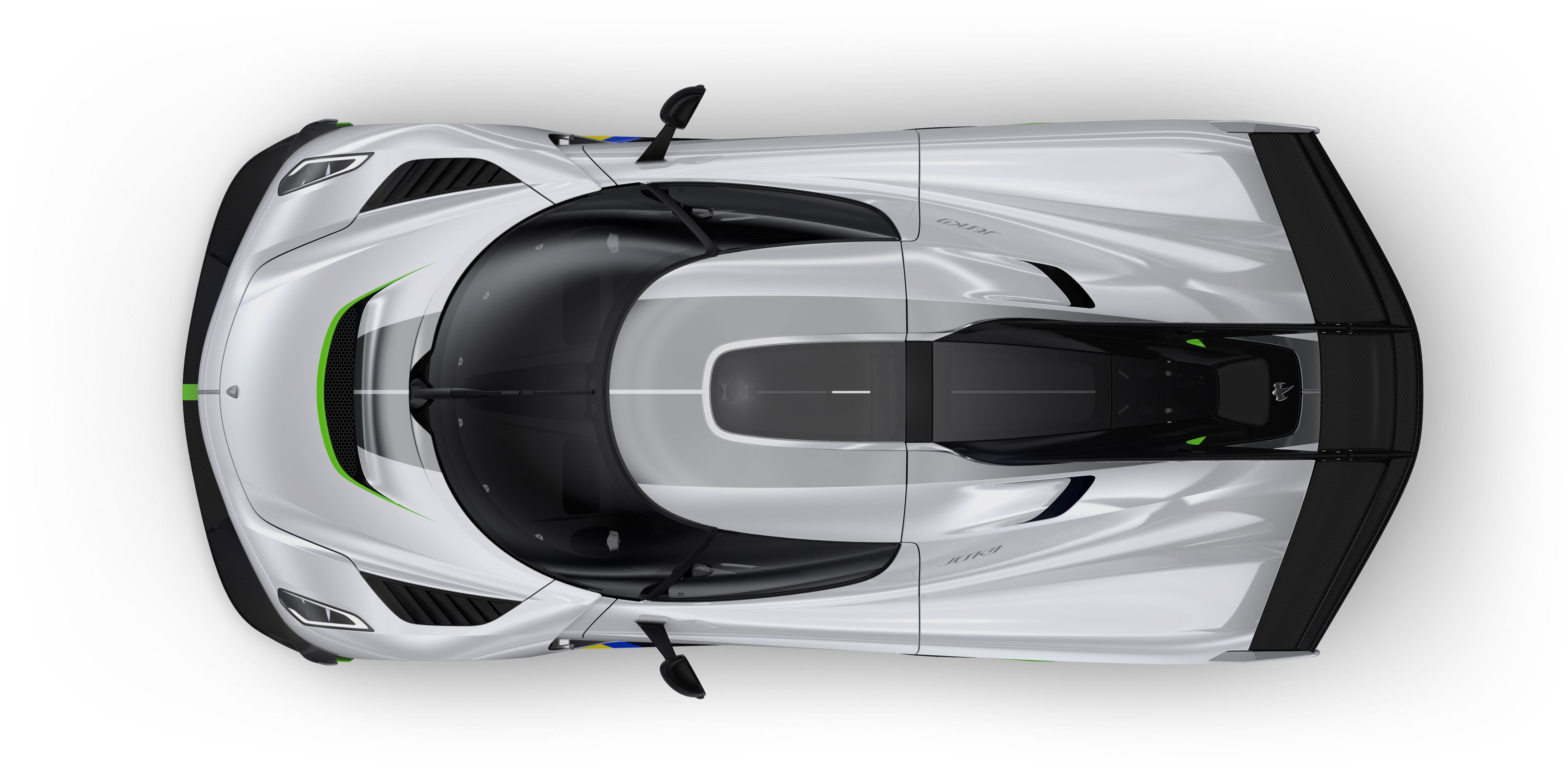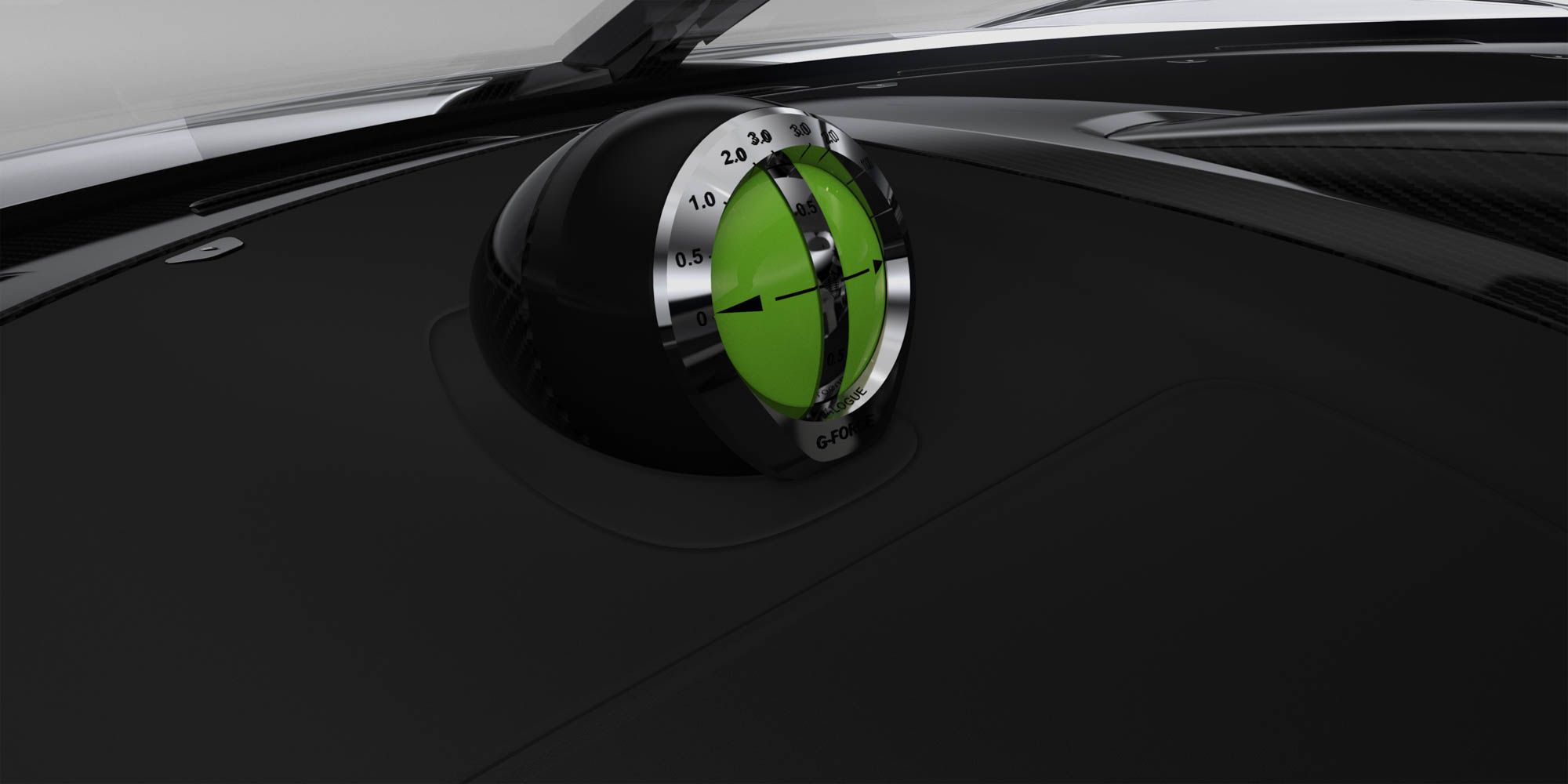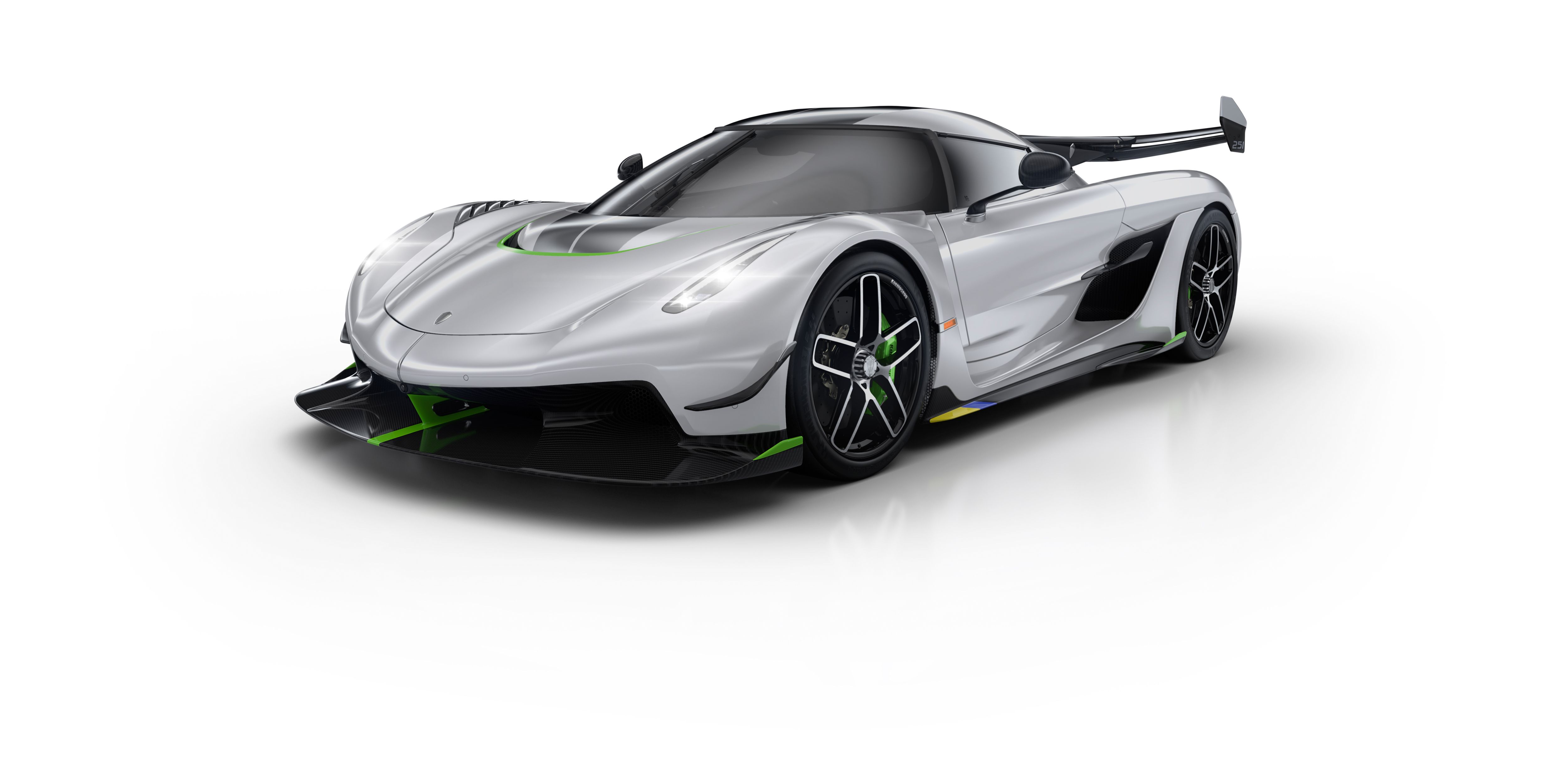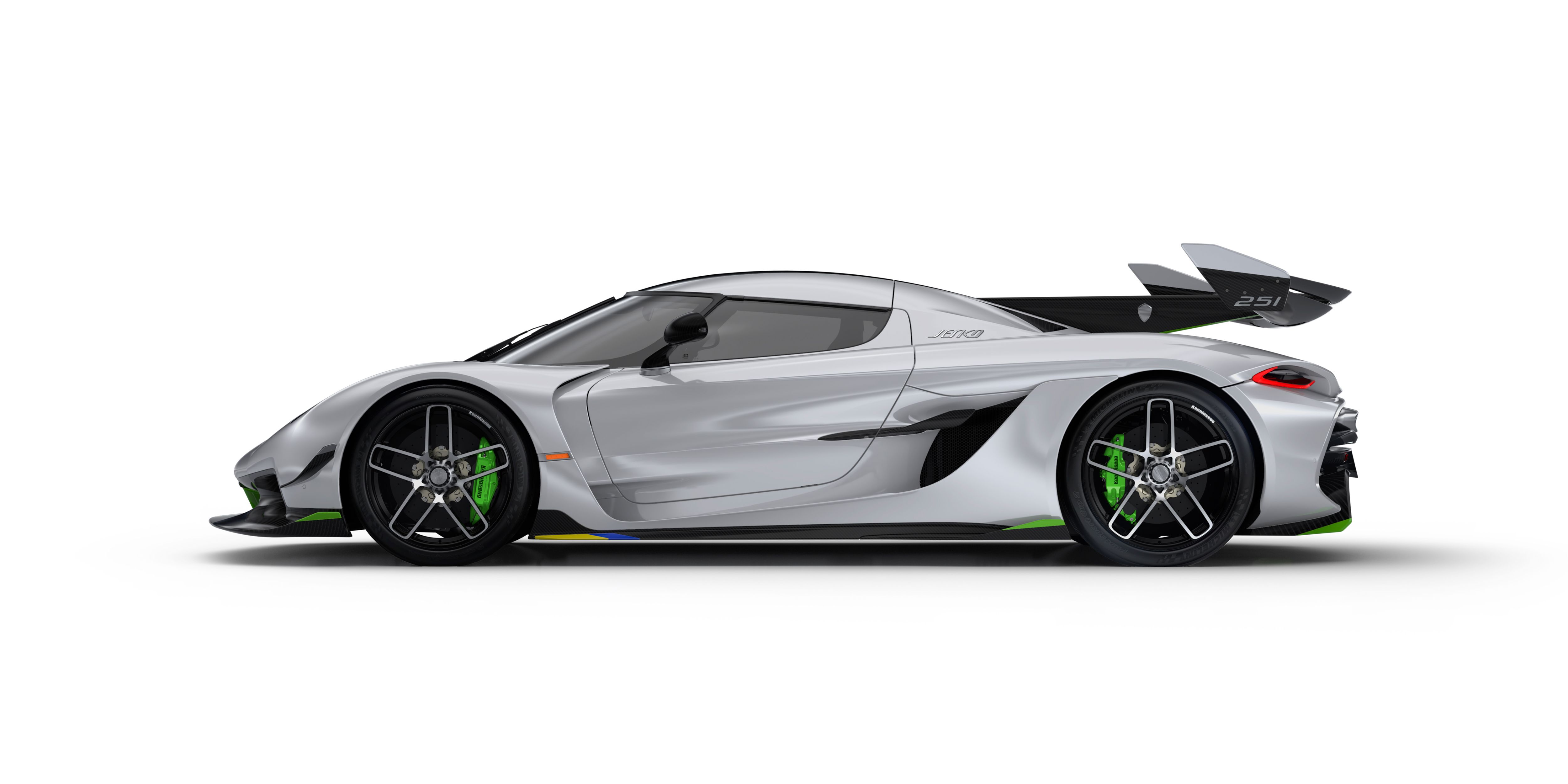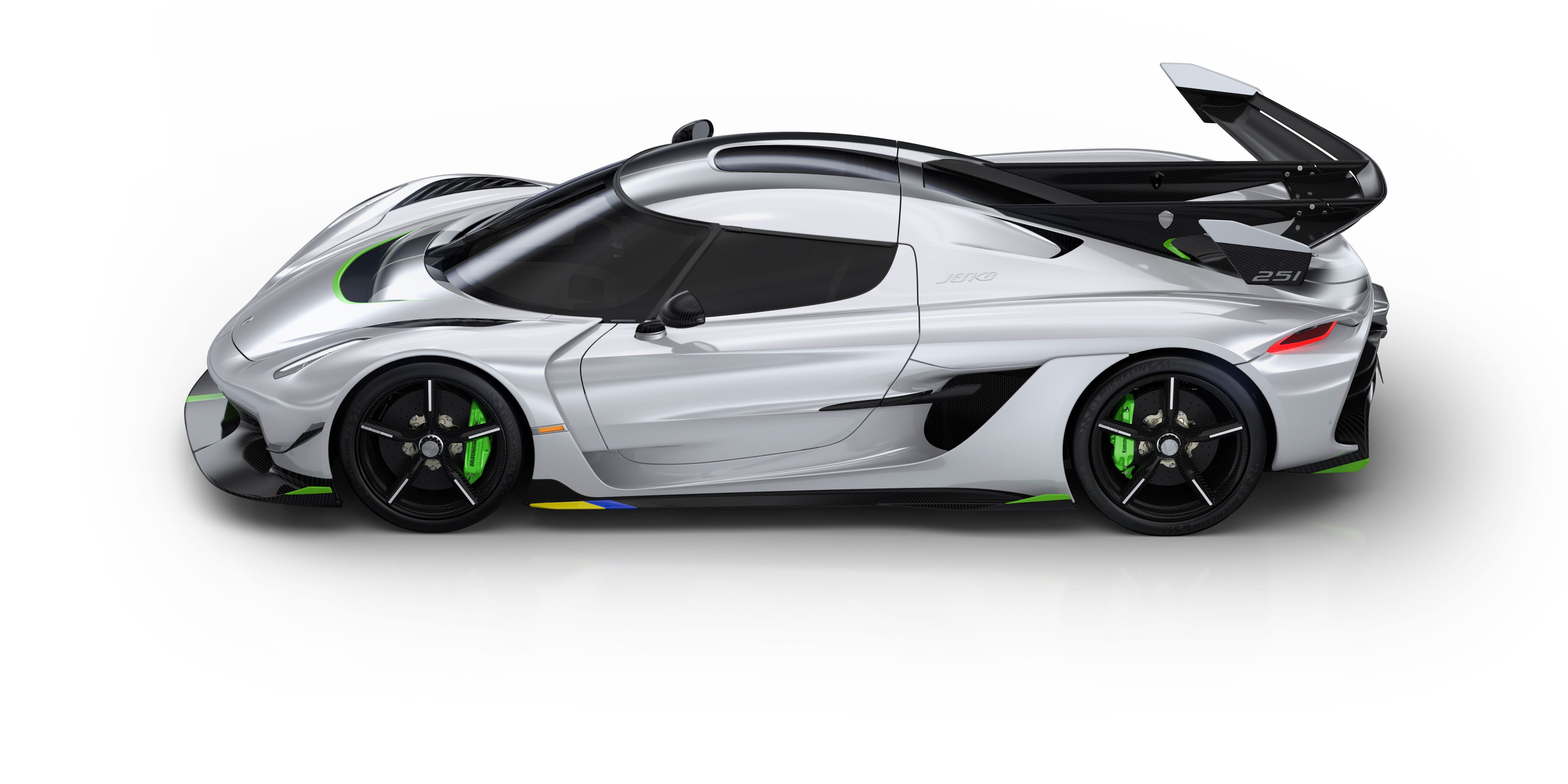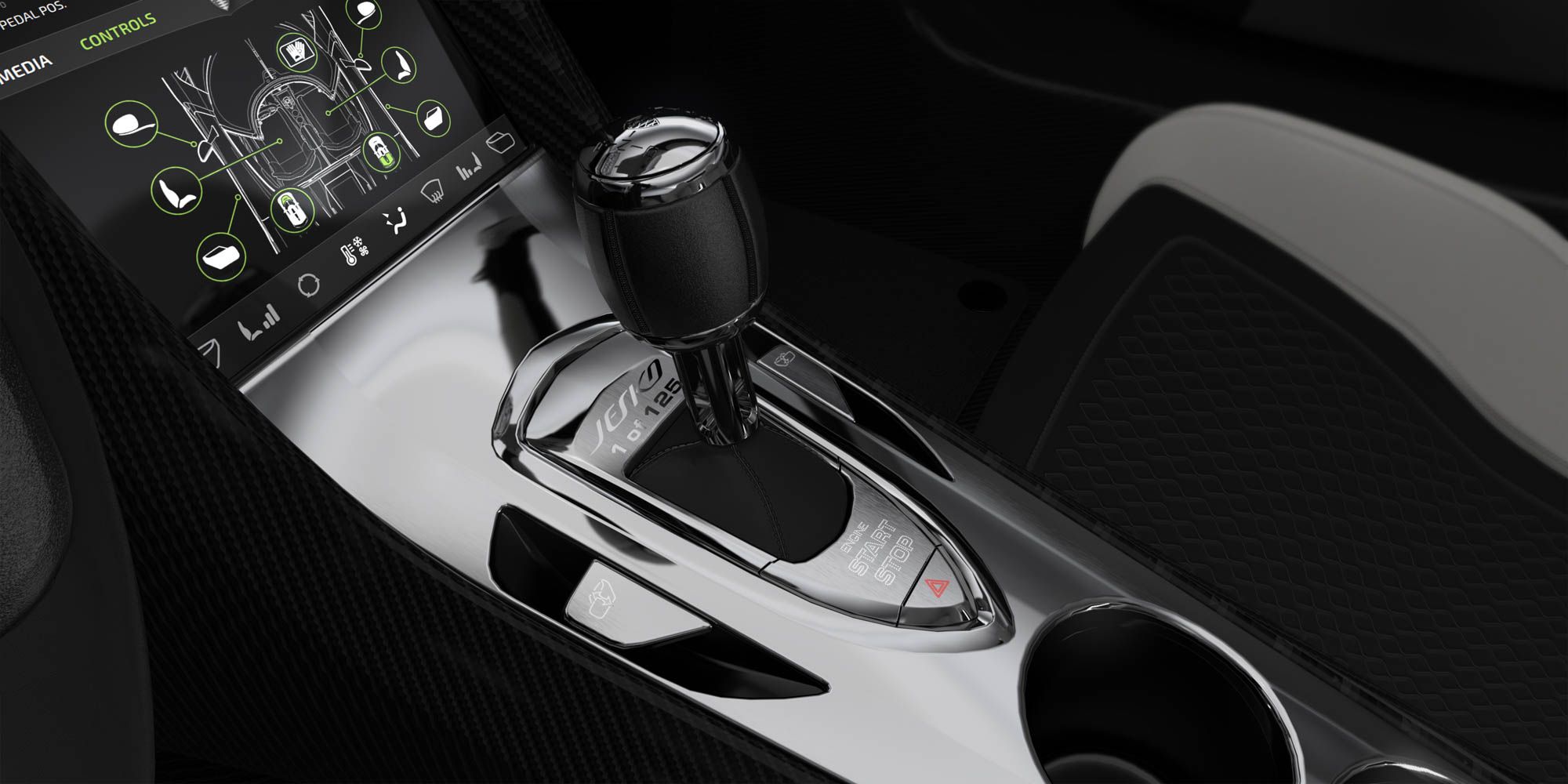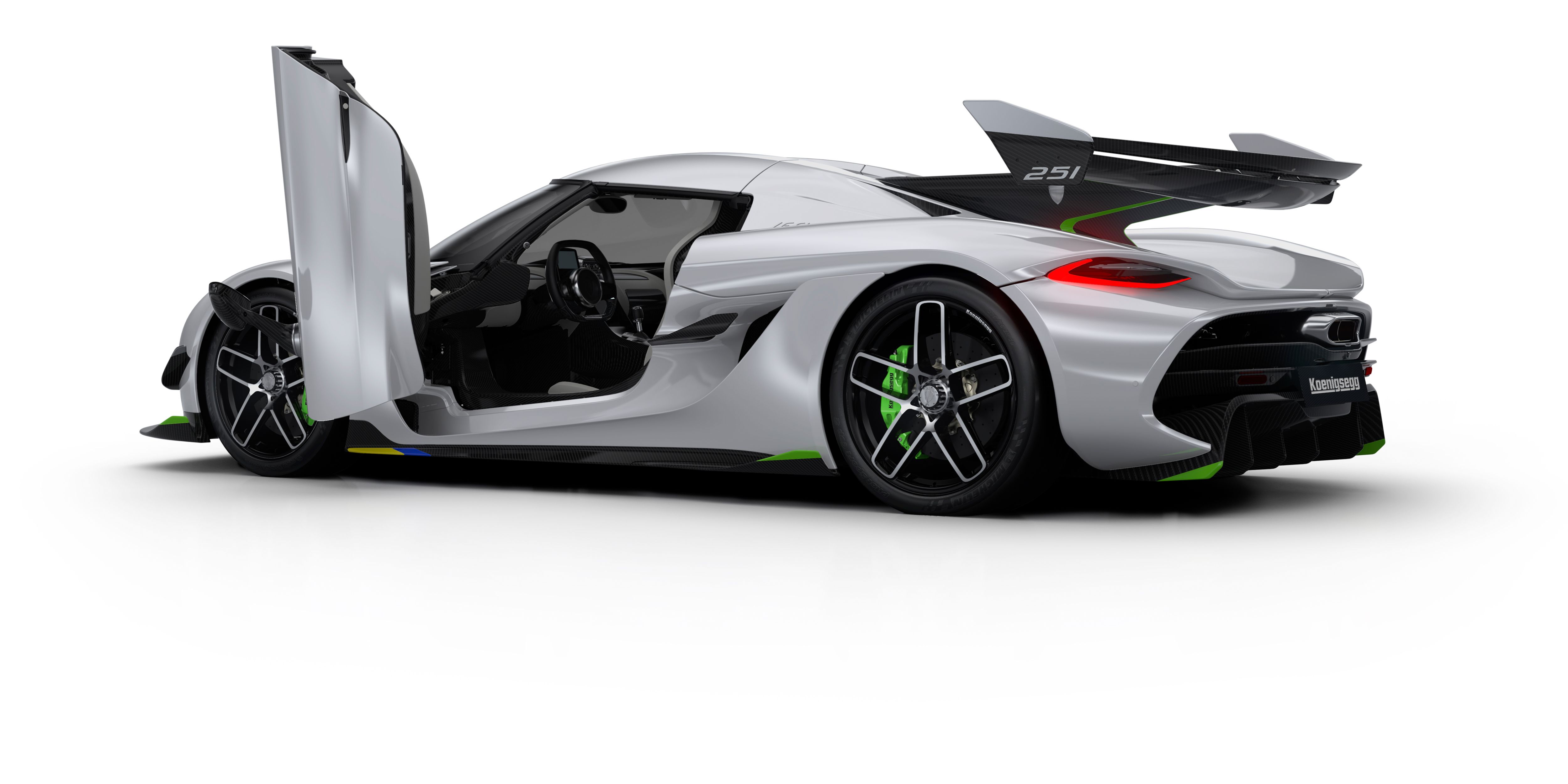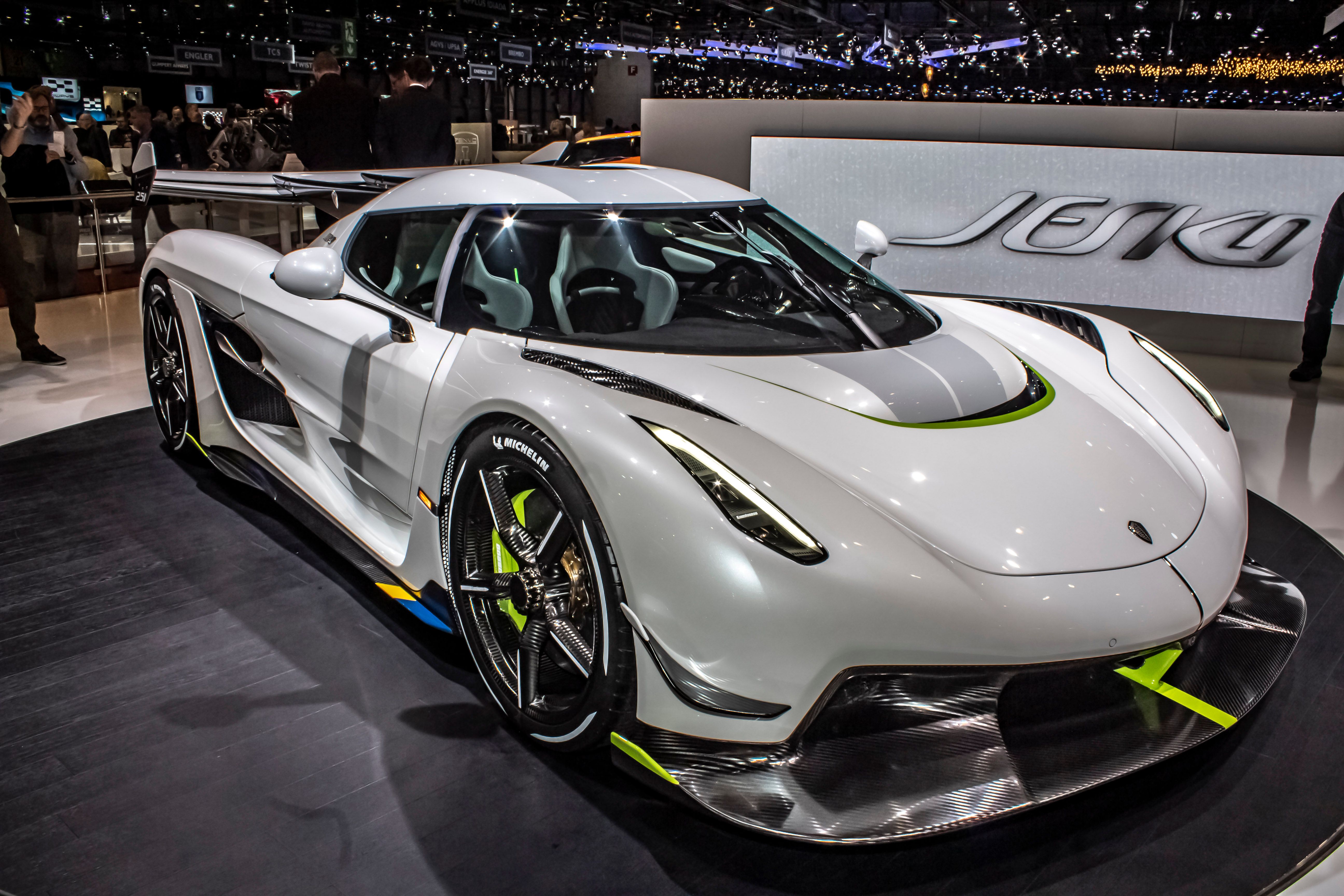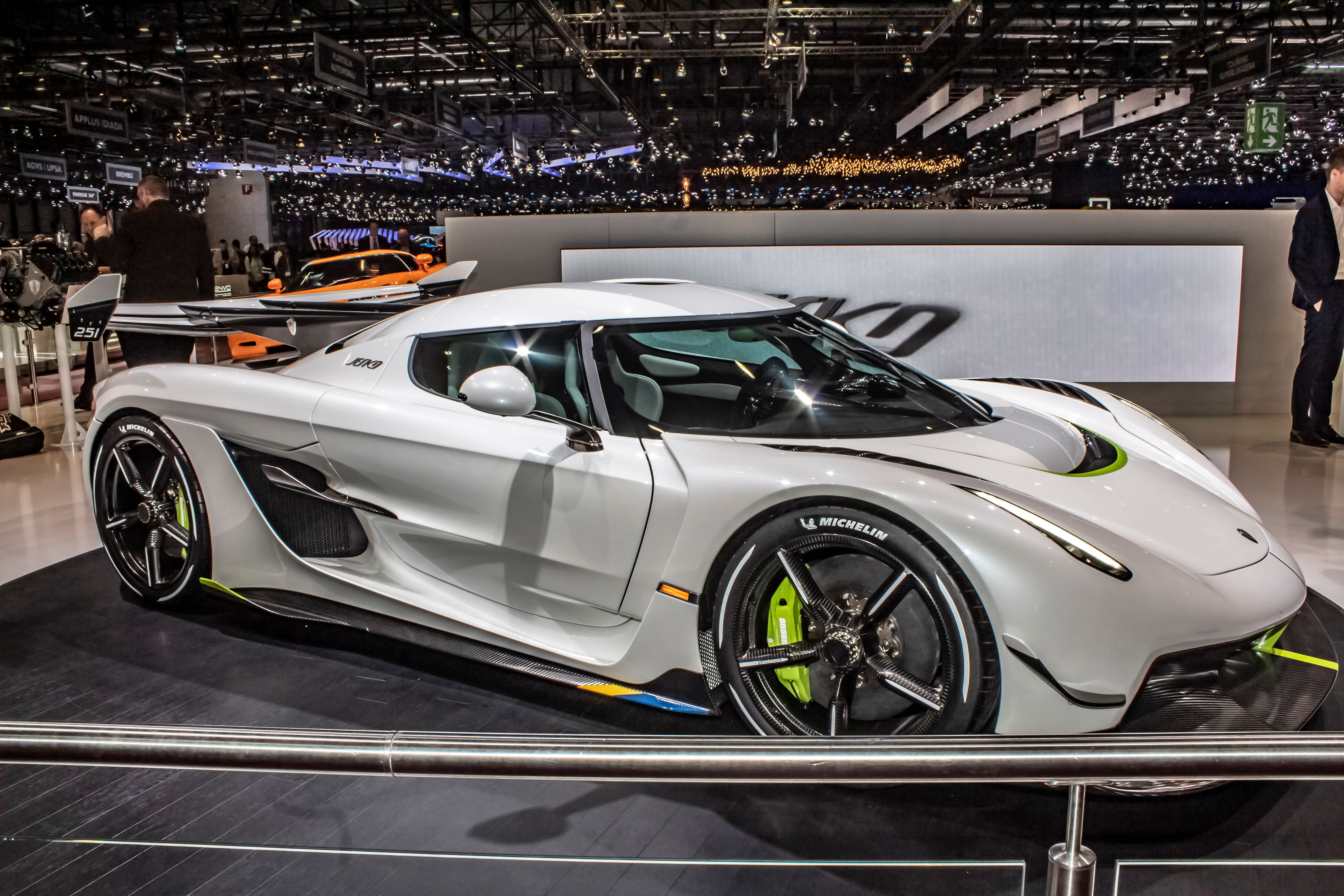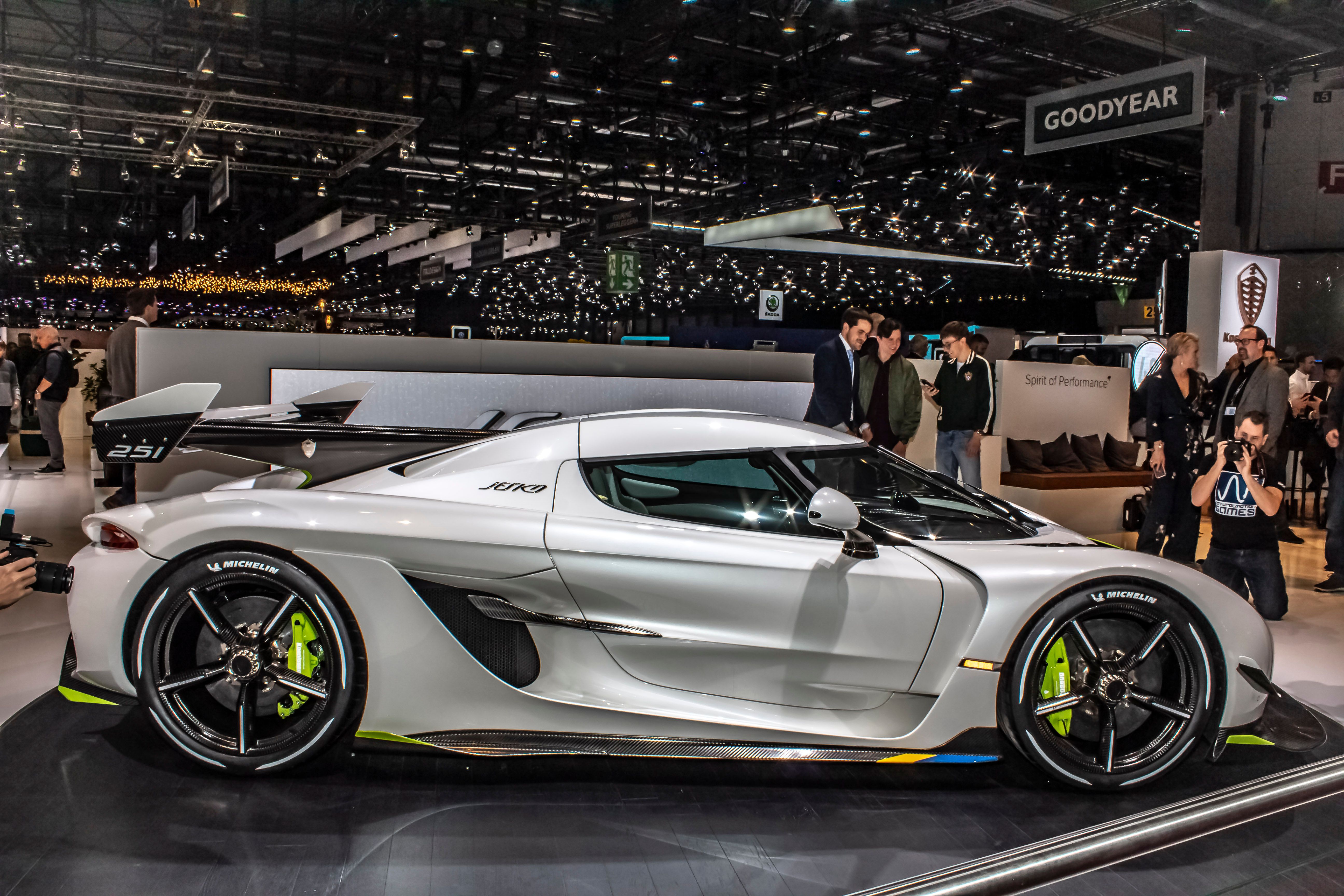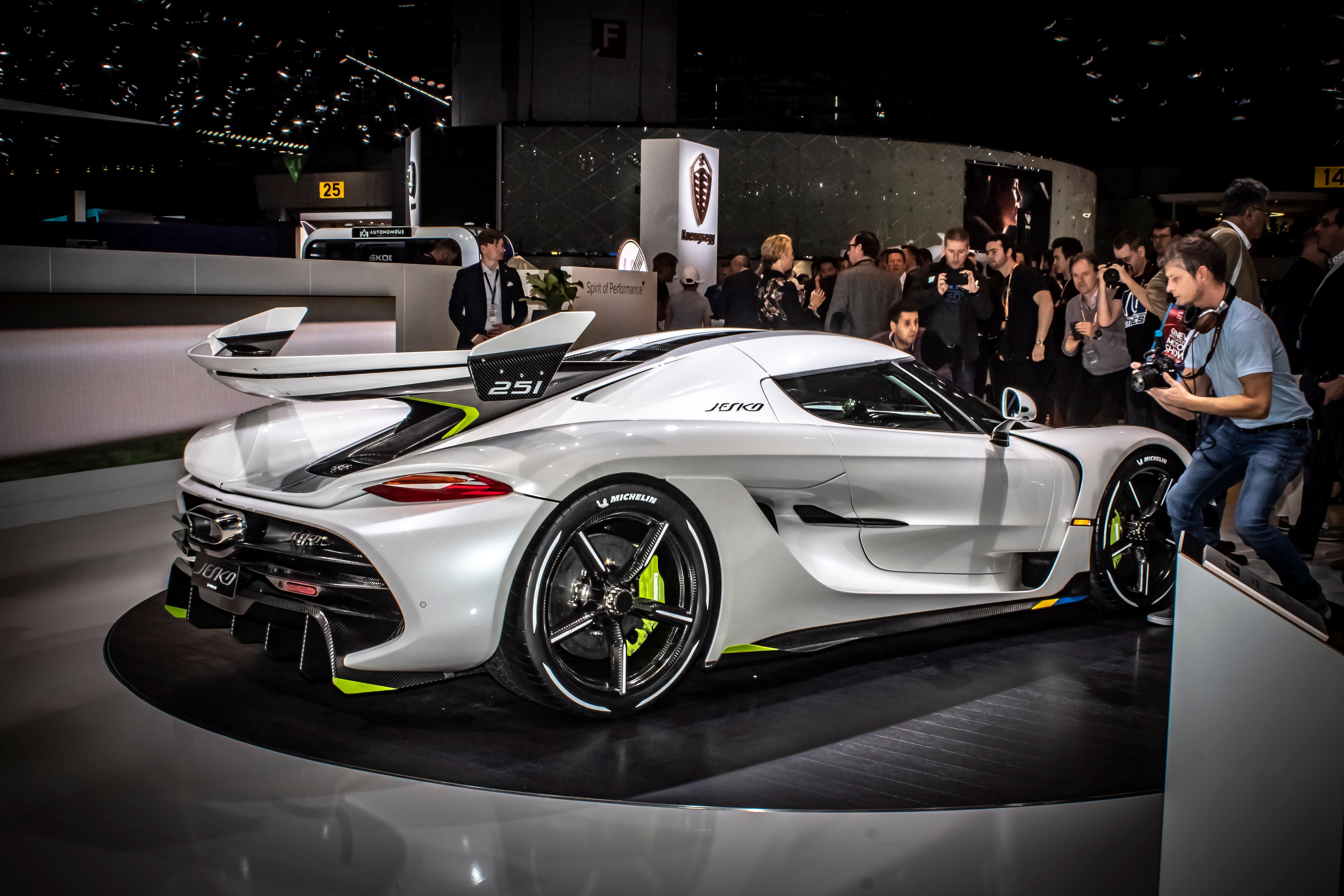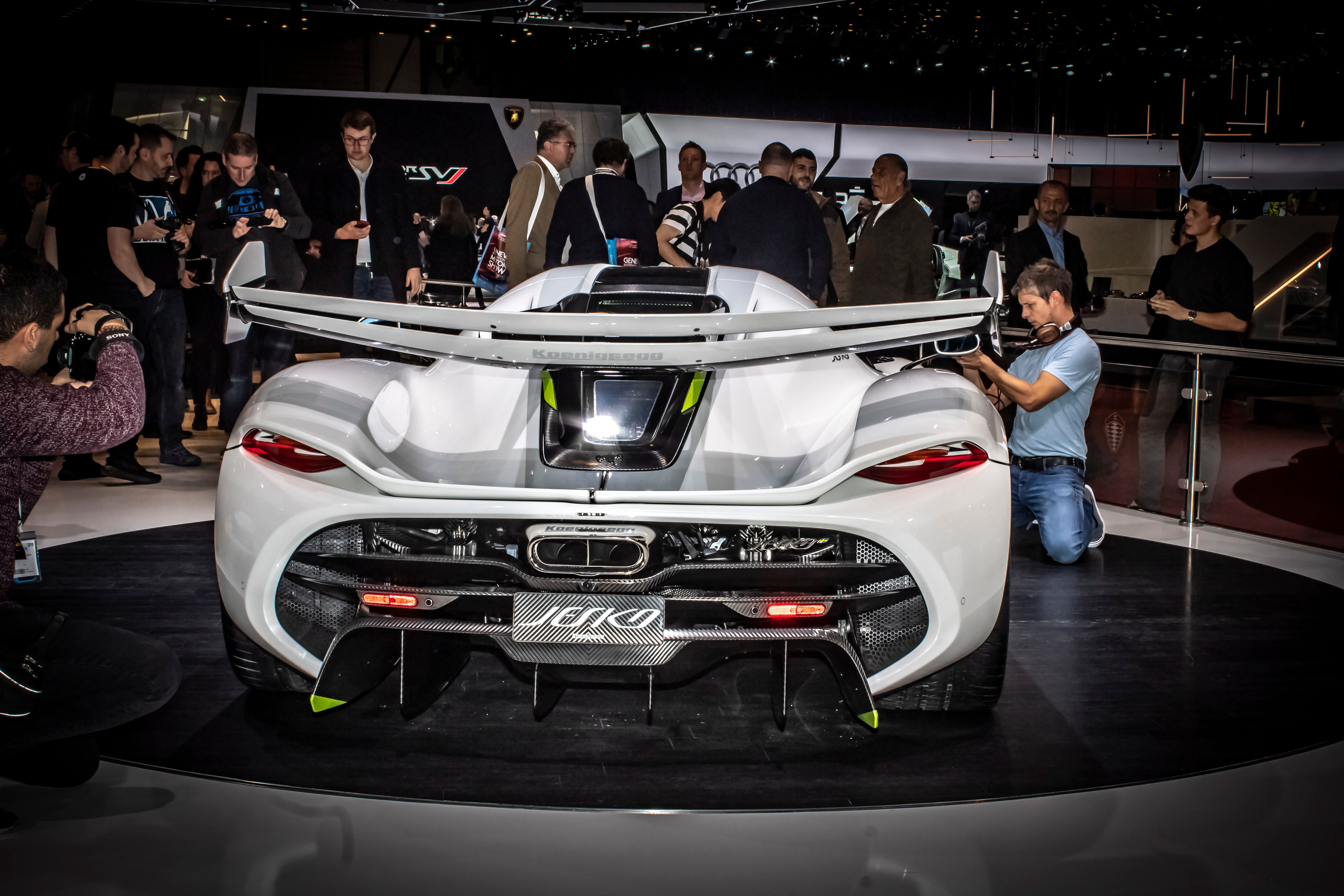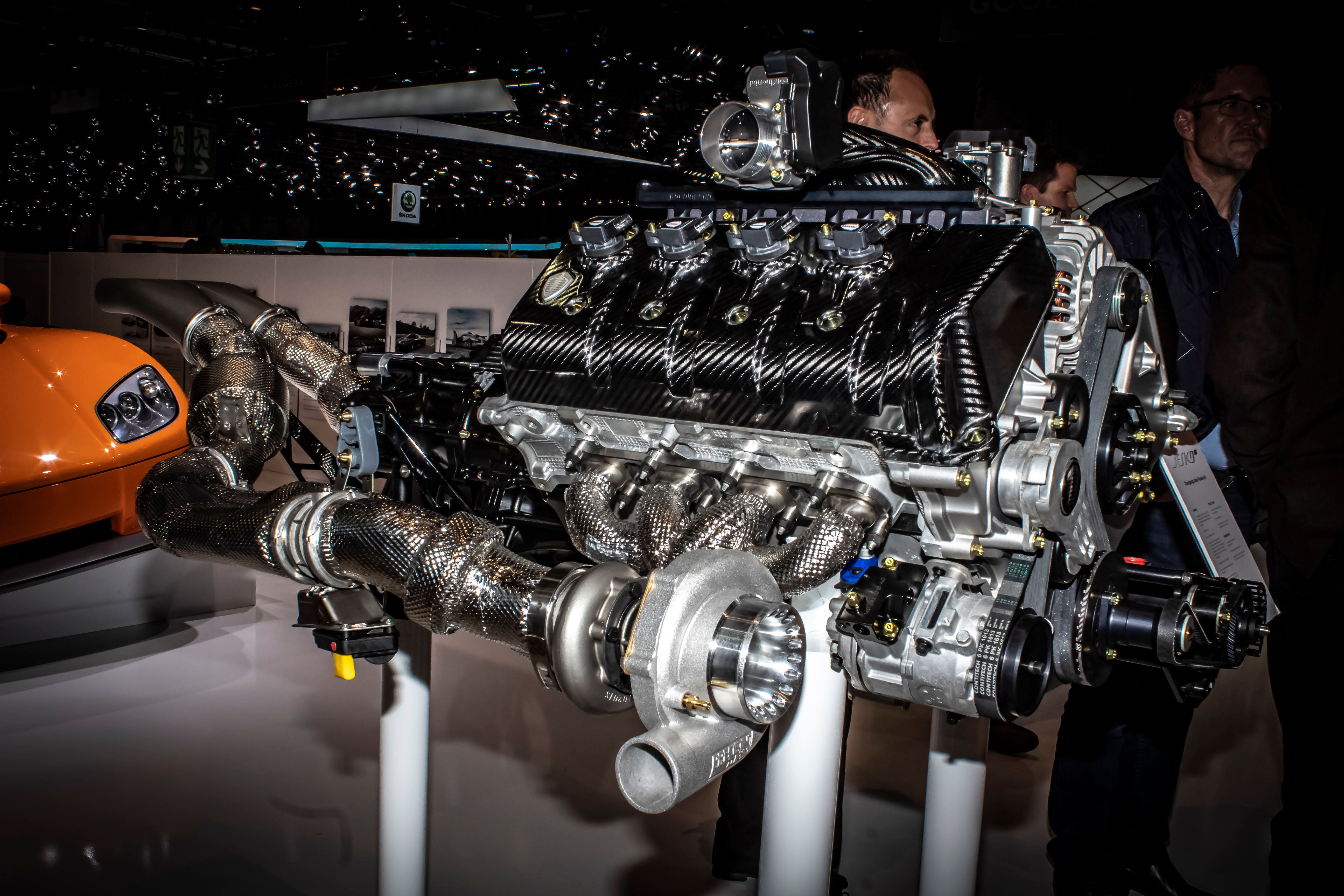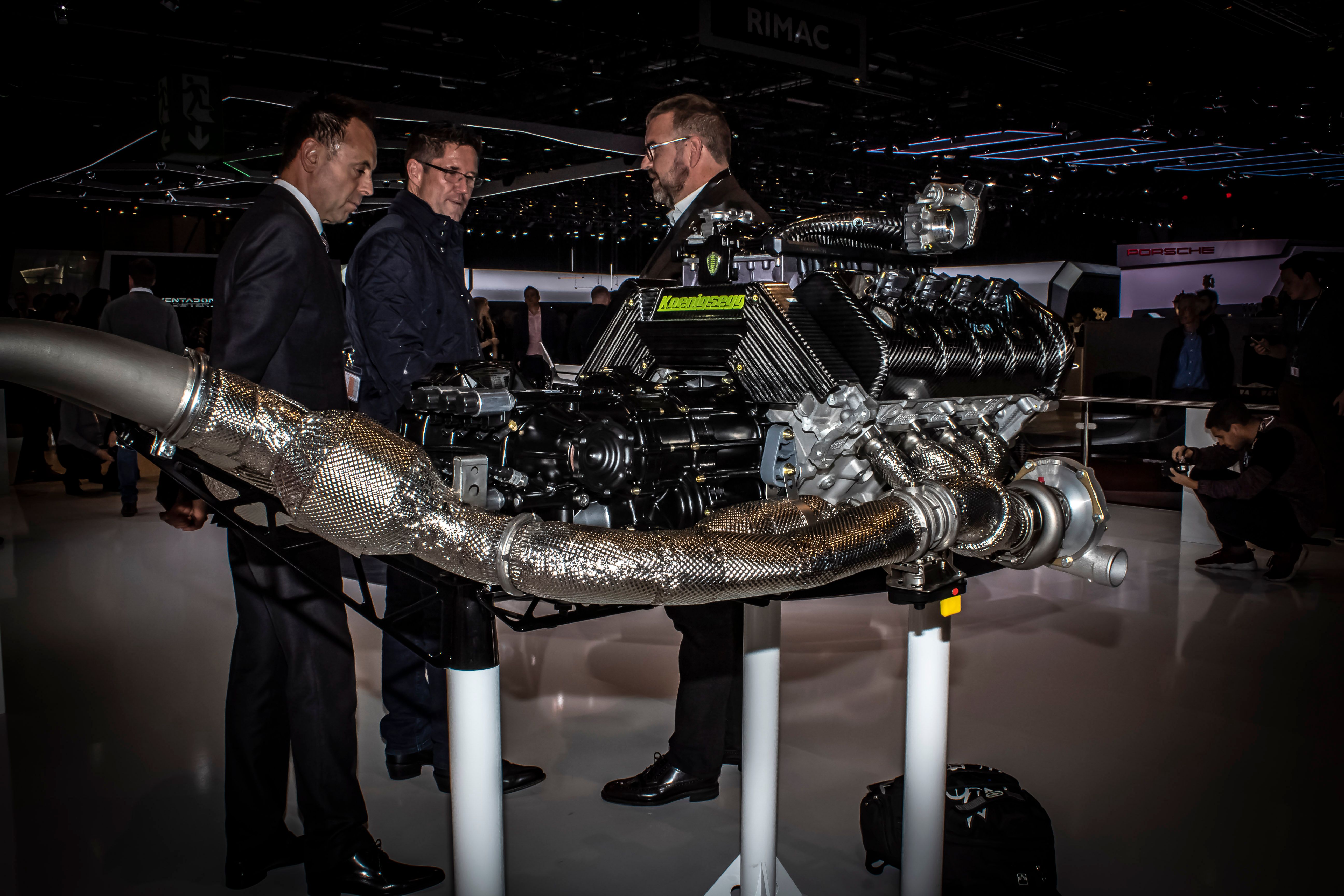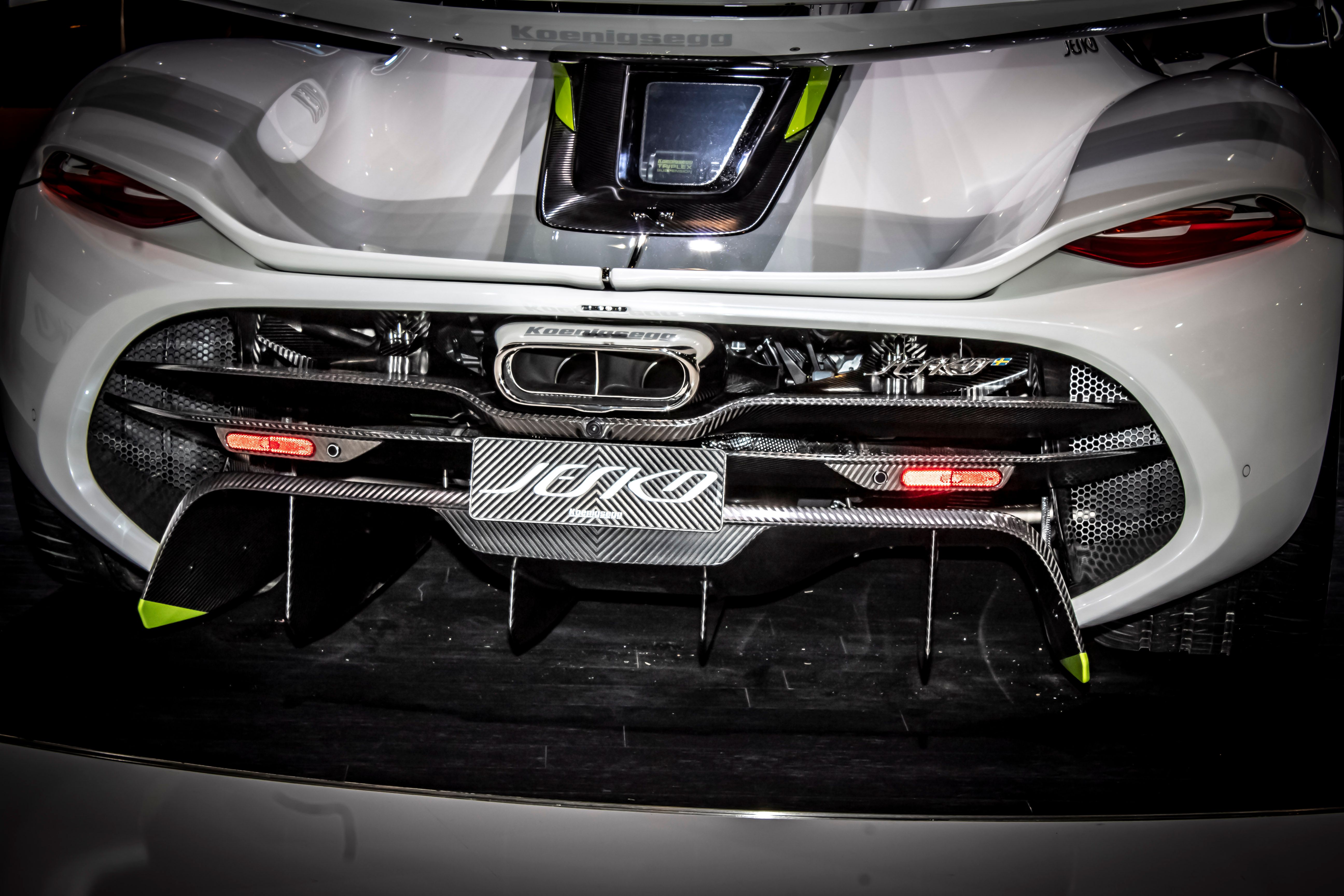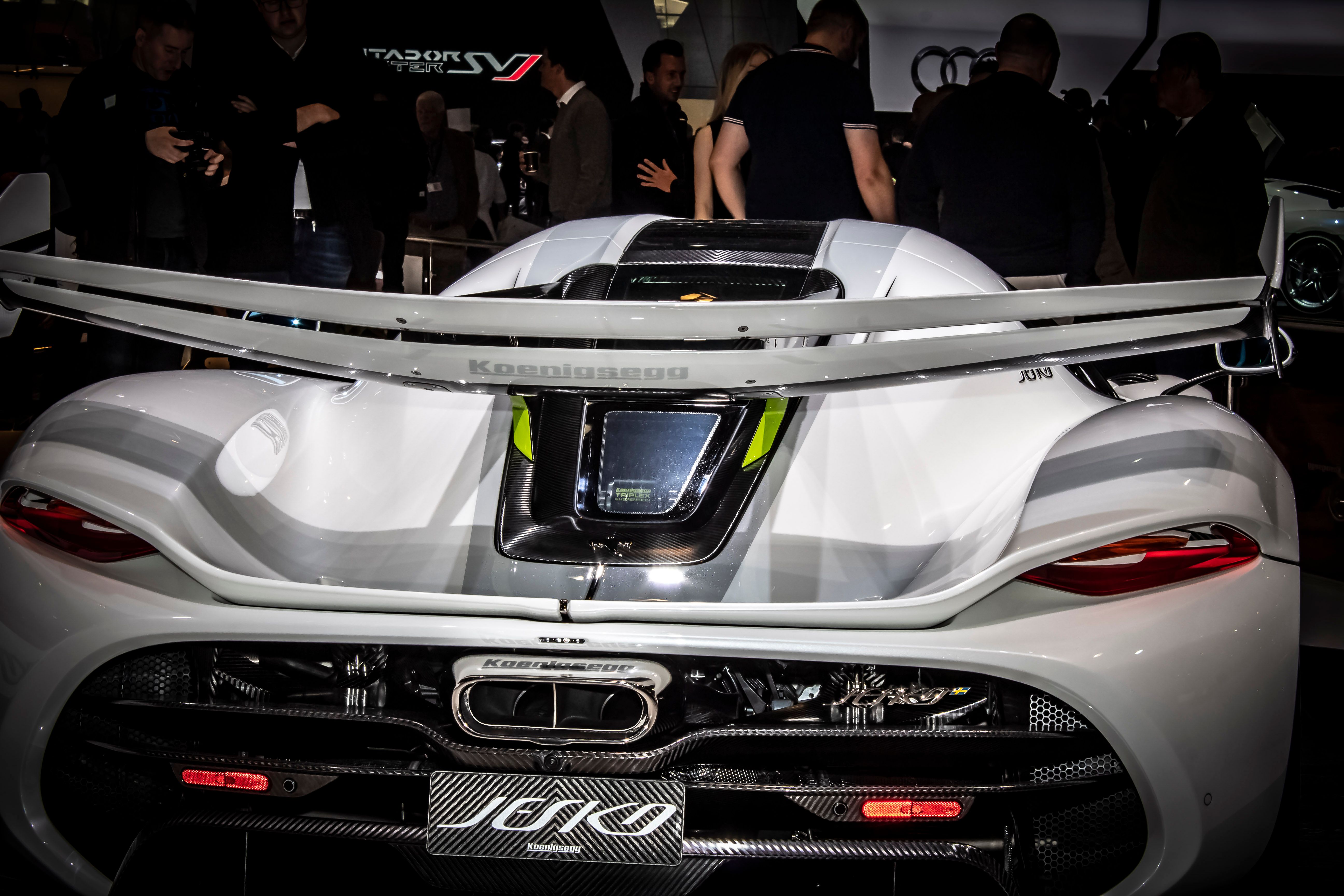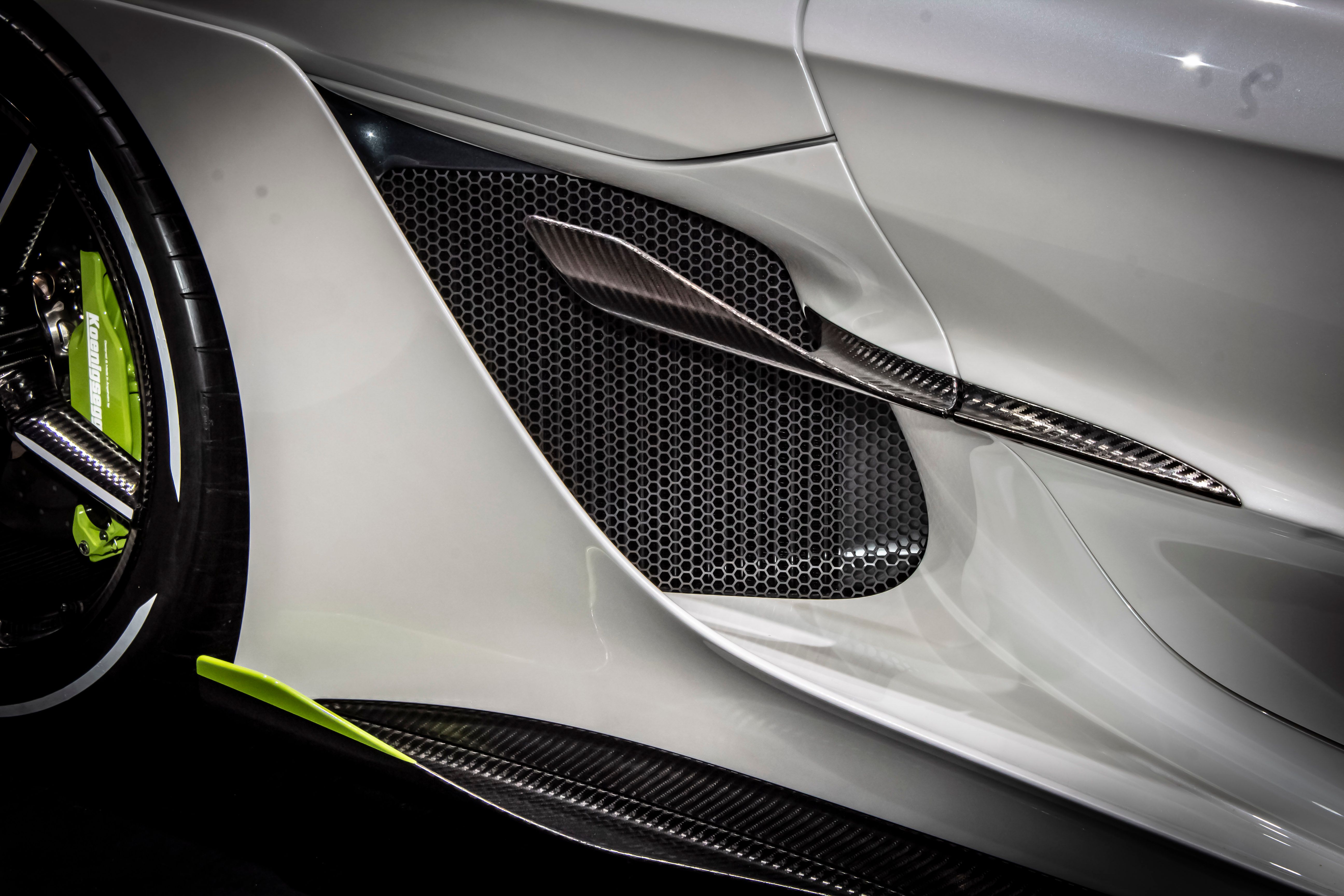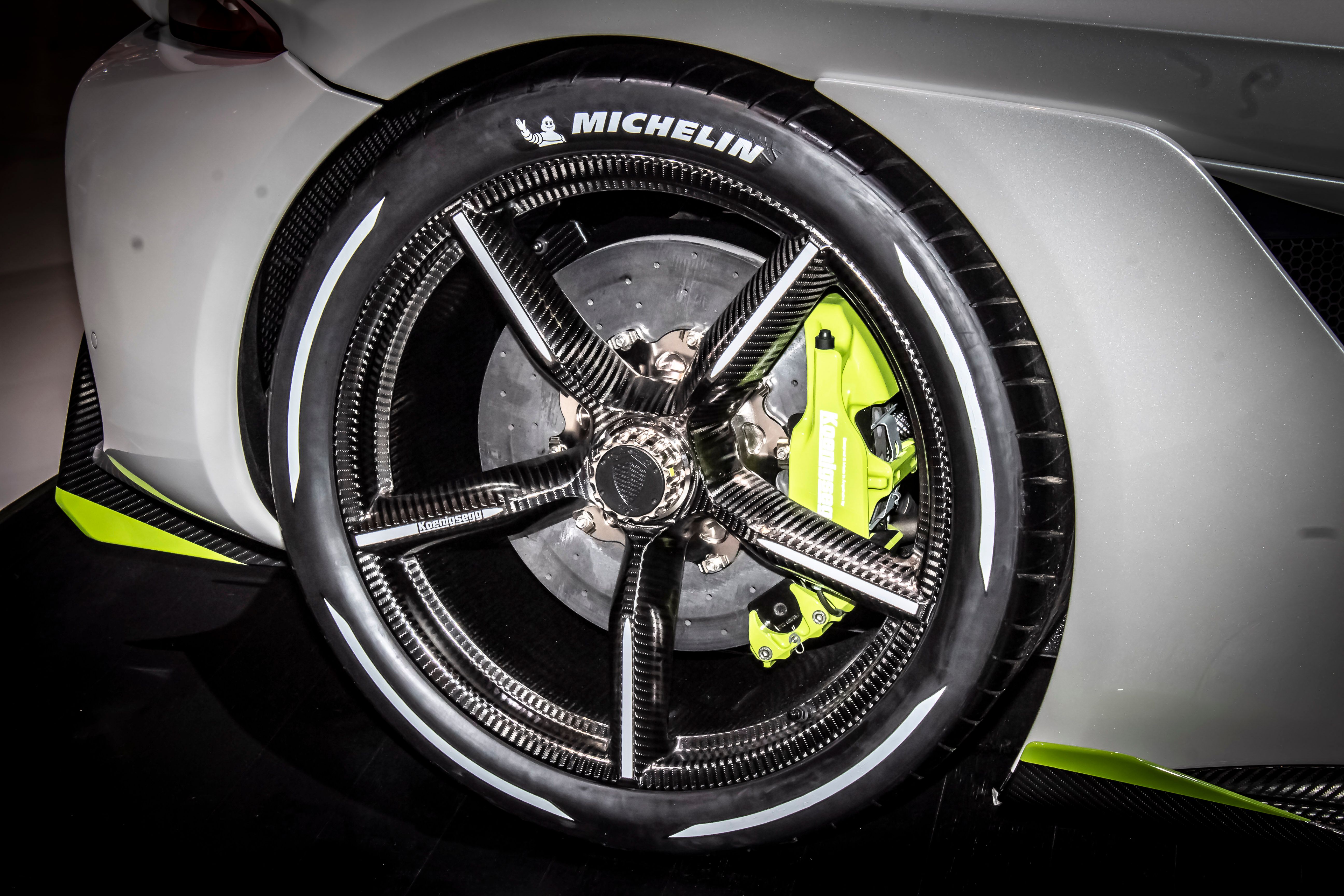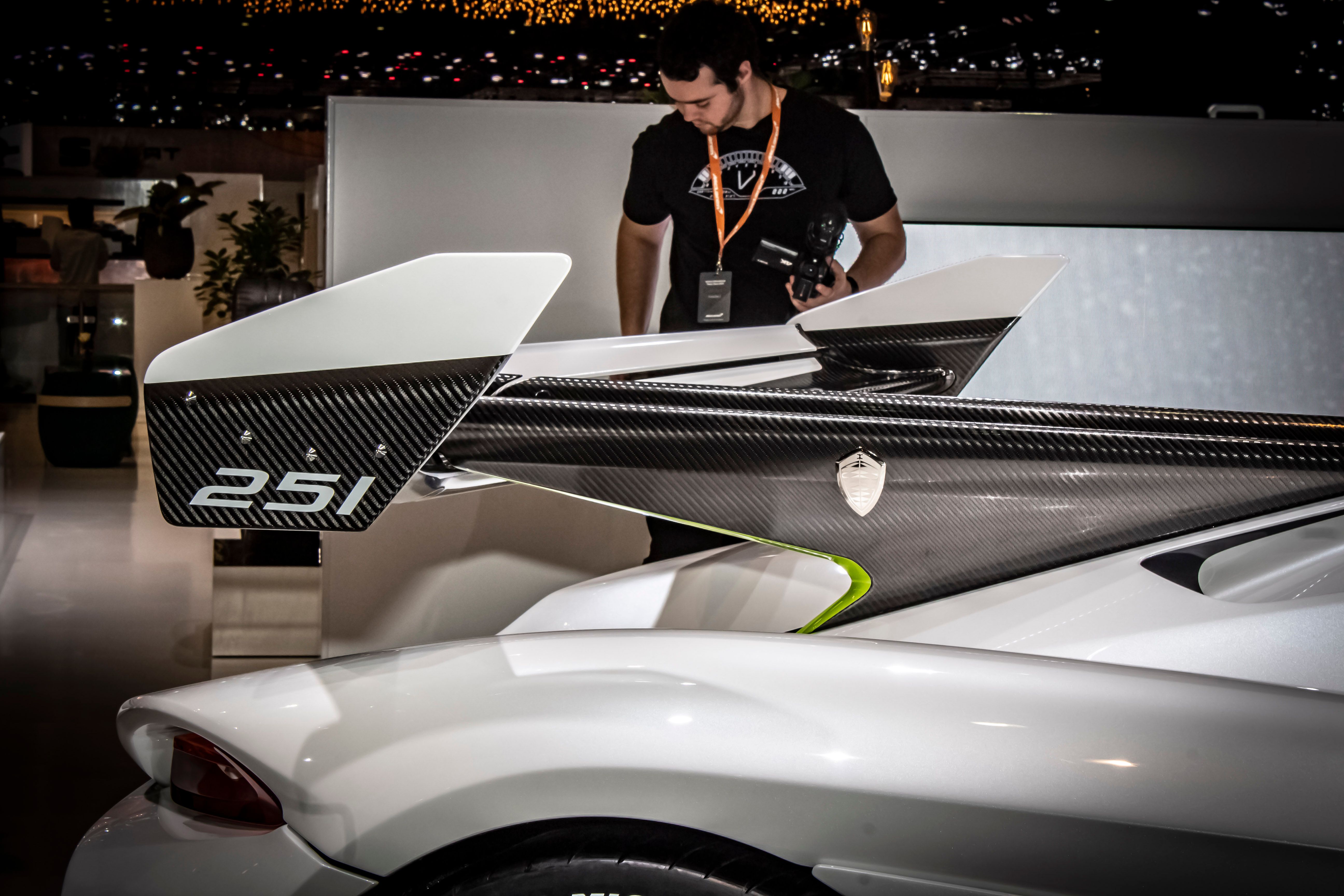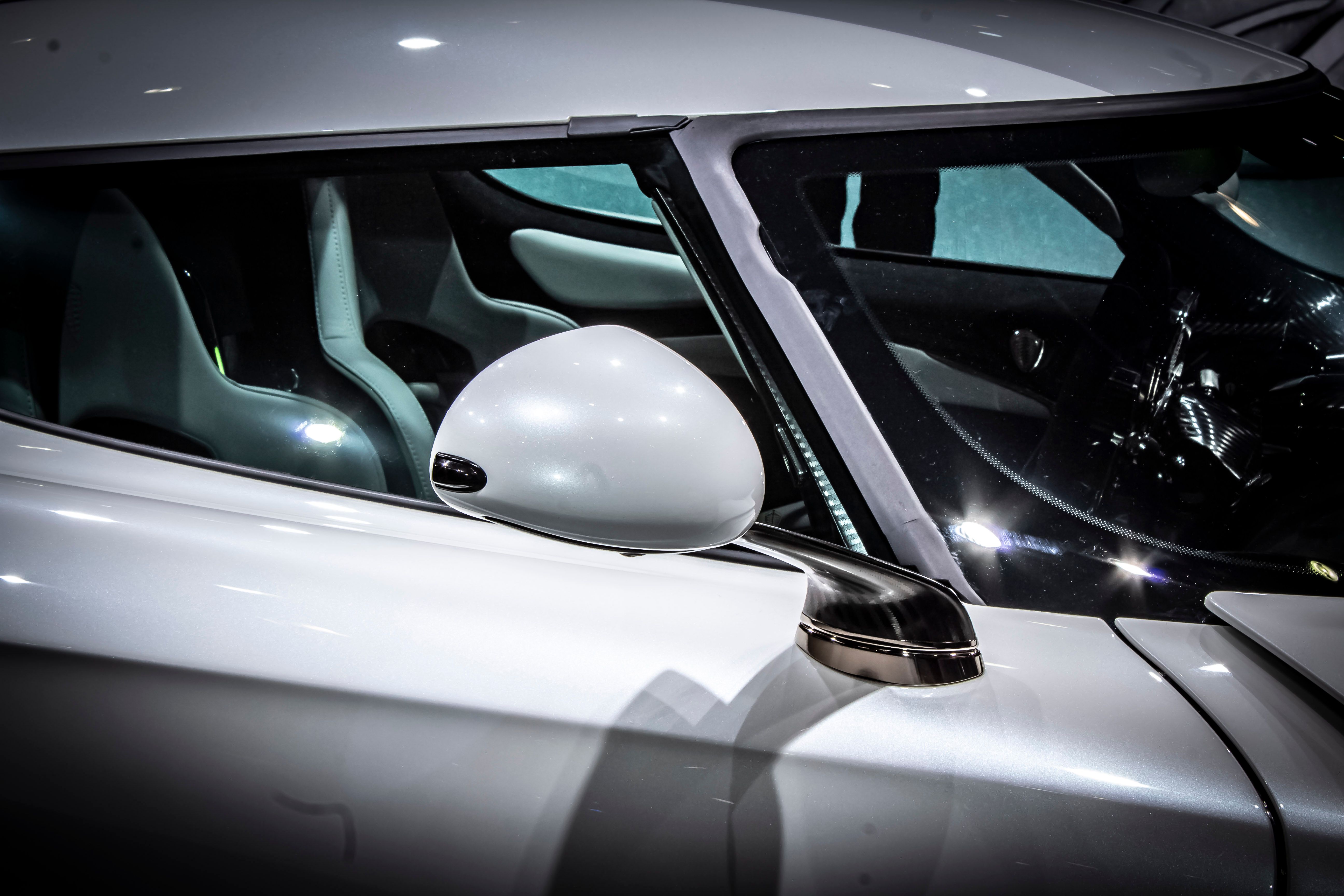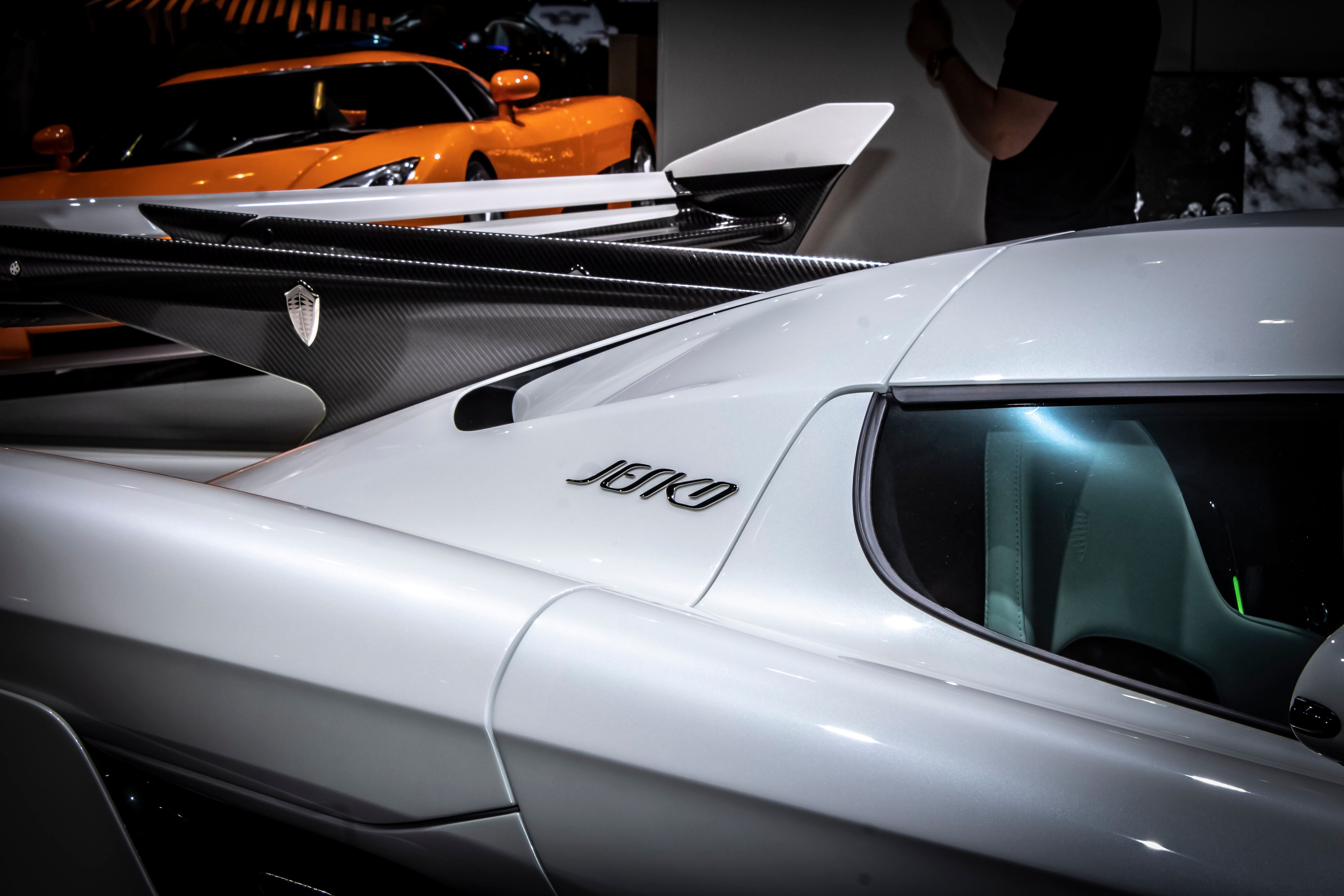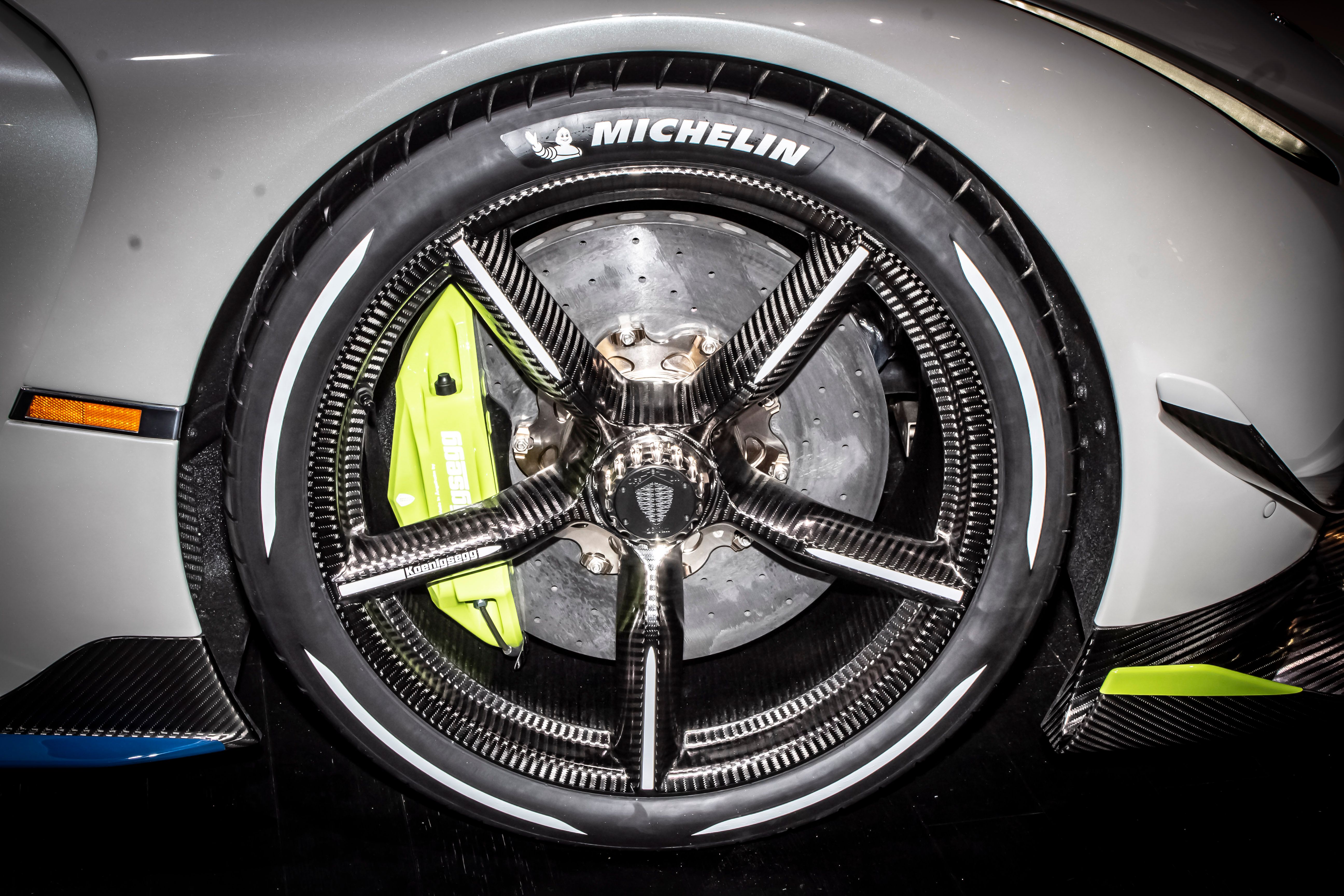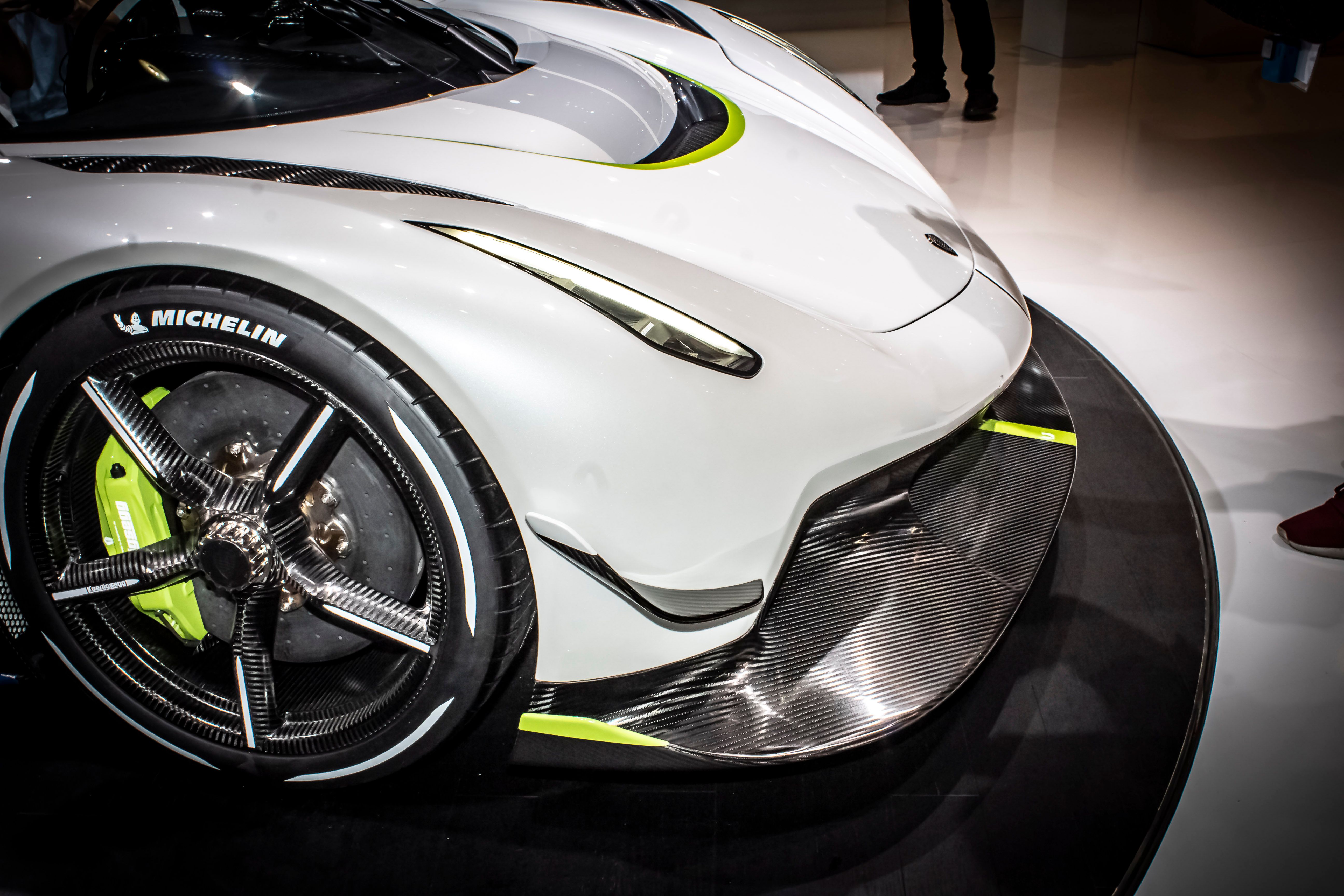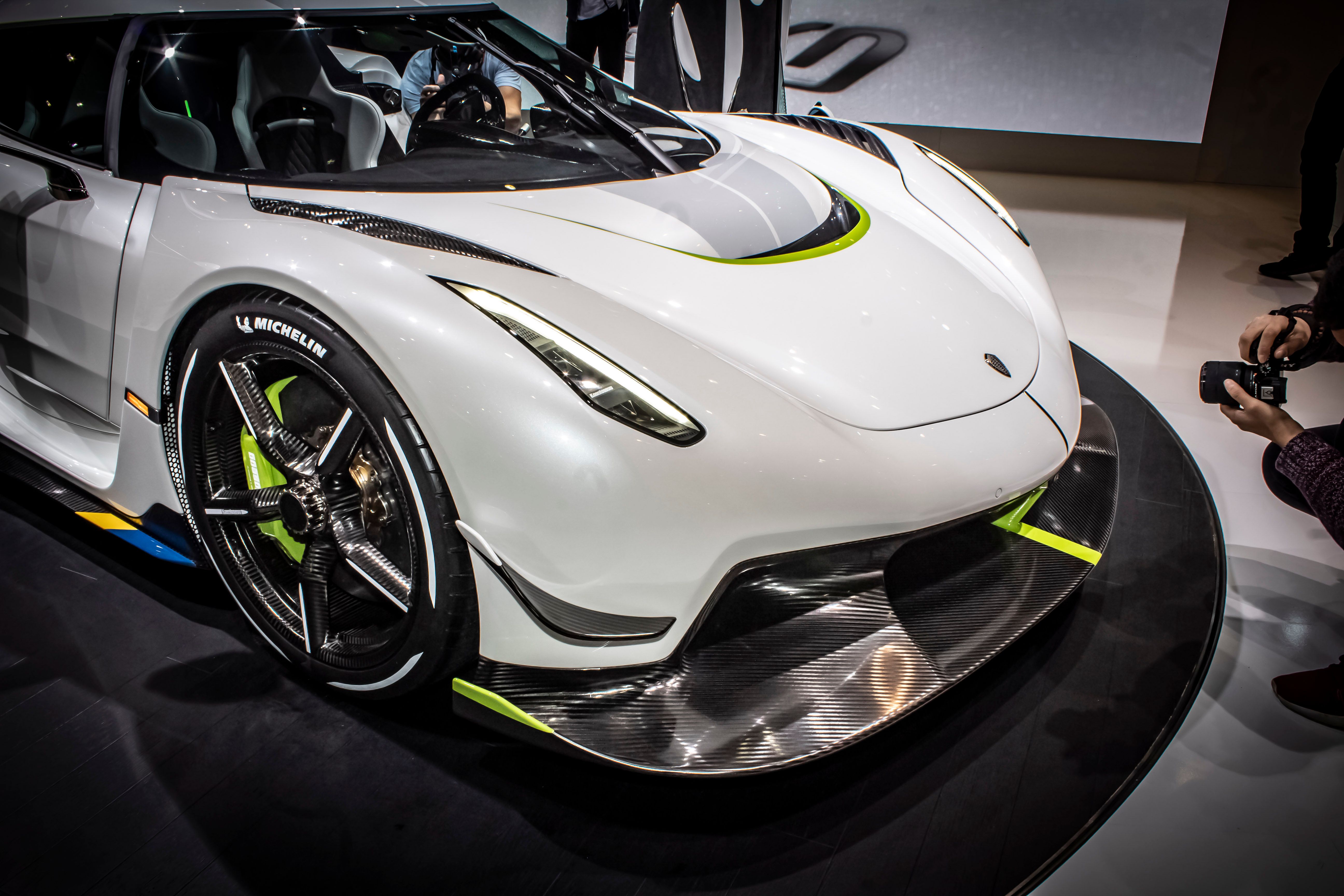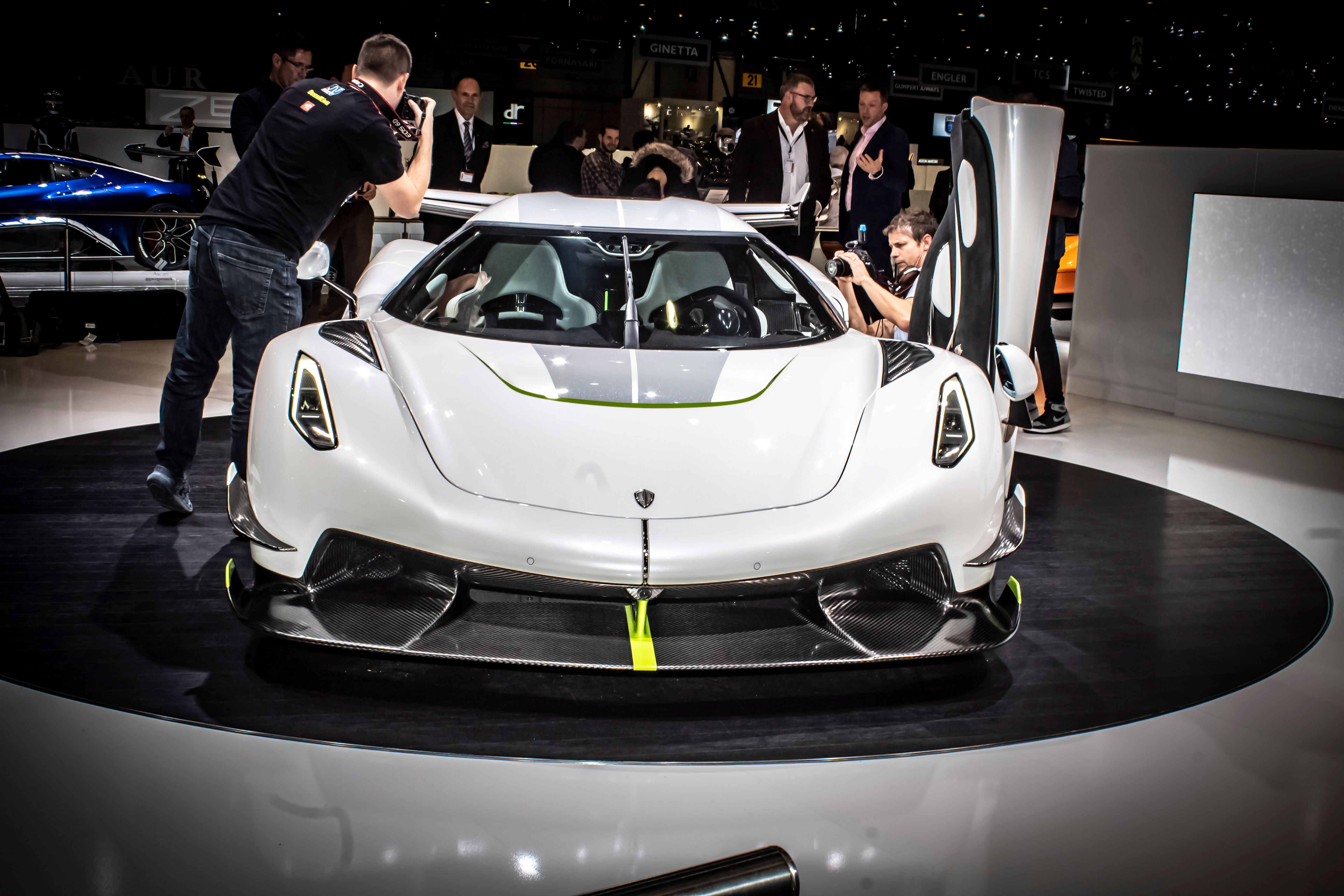The Koenigsegg Jesko is the company's latest supercar, third megacar, and spiritual successor to the iconic Agera. Unveiled at the 2019 Geneva Motor Show, the Jesko boasts a power-to-weight ratio greater than 1:1, which means its engine generates more horsepower than the car's total curb weight in kilograms. Koenigsegg offered similar versions of the One:1 and Agera, but the Jesko takes things one step further with an impressive downforce rating of 2,205 pounds.
Named after Jesko von Koenigsegg, the father of company founder and CEO, Christian von Koenigsegg, the Jesko marks the debut of the firm's latest carbon-fiber chassis and nine-speed multi-clutch transmission. It's also supposed to hit at least 300 mph according to Koenigsegg, so it could improve the Agera RS' 277-mph world record really soon. Let's find out more about that in the review below.
2020 Koenigsegg Jesko
- Make: Array
- Model: 2020 Koenigsegg Jesko
- Engine/Motor: V8
- Horsepower: 1578
- Torque: 1106 @ 5100
- [do not use] Vehicle Model: Array
2020 Koenigsegg Jesko Exterior
Although it has a unique design, the Jesko definitely looks like a Koenigsegg. That's mostly because it borrows some styling features from the Regera, including the headlamps and the pointy noise. However, the Jesko looks much more aggressive thanks to the massive carbon-fiber splitter mounted at the bottom of the front fascia. This is the deeper ever splitter that Koenigsegg design so far. A bunch of active under-body flaps help maximize or release downforce.
It also features a couple of extra canards on the sides of the front bumper, carbon-fiber louvers atop the front fenders, and a big vent in the front hood. The headlamps are thinner than the Regera's. The canopy-style cockpit includes the same type of windshield that wraps around the front part of the roof like the visor on a helmet.
The profile is again a unique design with a touch of Regera (and even a bit of Agera RS). The front fenders look a bit more aggressive though, as the middle part of the body is narrower and makes roof for a tall outlet. Like most mid-engined supercars, a big vent in the rear fender feeds air into the engine and toward the rear brakes.
The doors and the side windows seem to have about the same shape as on the Regera, but the roof seems to sit closer to the beltline. The roof is also shorter toward the back, but that's because the Jesko has a central fin integrated into the wing, just like Le Mans prototype cars. The side skirts are also a bit more aggressive and include winglets at each extremity. Speaking of the roof, the lightweight, carbon-fiber top can be removed to turn the Jesko into a roadster.
Various wheel designs are available, including five-spoke rims with really thin spoke that fully reveal the brake discs and calipers. Koenigsegg also offers a set of new carbon-fiber wheels that are the lightest and strongest production wheels of their size. The 20-inch front wheels weigh just 13 pounds, while the 21-inch rear wheels tip the scales at 16.3 pounds.
The rear end of the Jesko is mostly a massive opening that incorporates a carbon-fiber diffuser, two wing-like elements above, and a center-mounted exhaust pipe. The small taillights were placed well toward the sides and the way the spoiler runs over them give the rear end an angry look. The wing is obviously the main highlight here. Bigger than any other wing seen on a Koenigsegg, it misses the traditional vertical posts on the decklid. Instead, it's mounted on a pair of fins that extend from the engine hood, a design similar to LMP1 race cars.
All these new aerodynamic elements enable the Jesko to deliver up to 1764 pounds of downforce at 155 mph and up to 2,205 pounds at 171 mph. That's a 30-percent increase over the Koenigsegg One:1 at similar speeds and a 40-percent increase over the Agera RS. These are astonishing figures for a road-legal car. Actually, the Jesko is on par with the Senna GTR, which also delivers 2,205 pounds of downforce. But unlike the Jesko, the Senna GTR is a track-only vehicle. It road-going counterpart, the Senna, generates less than 1,800 pounds.
2020 Koenigsegg Jesko Interior
Before you step inside the Jesko, you need to know that it is fitted with the Autoskin technology from the Regera. This system uses electronics and miniaturised hydraulics to automate the opening of the doors and the hoods. So you can open both doors at the touch of button on the car's remote key.
Once inside, you'll notice that just like the Agera RS before it, the Jesko features a simile and clean design that brings together premium materials like leather and Alcantara, polished aluminum, and carbon-fiber. The center console is surprisingly thin for a supercar, especially if you compare the Jesko to the Chiron, but it looks the part thanks to the massive aluminum case. It also incorporates two cup holders and a nine-inch infotainment display. Called SmartCenter it provides access to device connectivity, media playback, and vehicle comfort and control systems, including the user manual.
A second screen, called SmartCluster, is placed on the back side of the steering wheel and acts as an instrument cluster. The five-inch unit display data about the car's performance performance. The steering wheel is brand-new and it's called SmartWheel because it has two small touchscreens with haptic controls. These enable easy access to phone, audio, and vehicle lift systems. All these systems are powered by software co-developed with Qt Professional Services and can be updated over-the-air via the Koenigsegg Cloud.
While it might not be a Mercedes-Benz, the Jesko is packed with the latest features offered in premium cars. There's USB slots, inductive smartphone charging, Bluetooth connectivity, automated climate control, bird’s eye view’ parking assistance, digital warning system, electrically adjustable mirrors, seats and windows, adjustable pedals and steering, and parking sensors.
Finally, the redesigned carbon-fiber monocoque chassis is 1.5 inches longer and 0.9 inches taller than its predecessor and provides more legroom, headroom, and greater visibility. Koenigsegg doesn't say how much extra room there's in the Jesko compared to the Agera RS, but the difference shouldn't be very noticeable.
2020 Koenigsegg Jesko Drivetrain
The Jesko features the familiar twin-turbo, 5.0-liter V-8 engine found in the Regera and Agera, but Koenigsegg made big changes to the powerplant. The most important upgrade is a new crankshaft that tips the scale at only 27.5 pounds, which makes it the lightest production V-8 crankshaft in the world. This new component allows the engine to produce more power with greater efficiency and moves the rev limit up to 8,500 rpm.
The engine also features active mounts from the Regera, new, lightweight connecting rods and pistons, and a new air-injection system with a small compressor and carbon-fiber air tank. The latter provides a powerful 20-bar shot of air into the turbocharger in order to pre-spool the turbos and provide instant throttle response.
The redesign also enables the V-8 to house a tumble valve on the intake and individual pressure sensors for each cylinder. This provides real-time, precision monitoring of every cylinder, an industry-first feature.
But how much power can this engine deliver? Koenigsegg says that the mill is rated at 1,262 on regular gasoline, but this figure jumps to 1,578 horses when you feed it E85 biofuel. Torque peaks out at a whopping 1,106 pound-feet at 5,100 rpm, but you get access to more more than 730 pound-feet from as low as 2,700 rpm.
Compared to the Agera RS, the Jesko pumps out an extra 102 horsepower on regular gasoline and an extra 237 horses on E85. When it comes to torque, the Jesko deliveres an extra 96 pound-feet. However, the Jesko is also a little heavier than the Agera RS. At 3,130 pounds, the Jesko pulls an extra 55 pounds compared to the Agera RS and an extra 132 pounds compared to the One:1, the lightest Koenigsegg yet. Despite the extra weight, the Jesko boasts a power-to-weight ratio beyond the company's 1:1 target. Goal achieved!
Koenigsegg has yet to release performance figures, but the Jesko should be astoundingly quick. Expect it to hit 60 mph in around 2.5 seconds, a benchmark that will make it one of the quickest hypercars out there. More importantly, Koenigsegg claims that the Jesko is capable of hitting over 300 mph according to its simulations. This means that the Jesko is likely to break the Agera RS' top speed record of 277 mph. It could also become the first production car to hit the 300-mph mark, a record that's also targeted by SSC and Hennessey with the Tuatara and Venom F5, respectively.
Innovative multi-clutch transmission
The really big news in this department is Koenigsegg's new LST transmission. Short for Light Speed Transmission, this gearbox is a nine-speed multi-clutch unit that does not have traditional synch rings. This design enables it to change between any gear possible, a feat that the usual dual-clutch transmission doesn't have.
For example, this LST unit will allow you to shift from seventh gear directly to fourth gear without waiting for synchronisation. This eliminates the loss of time and momentum that comes with a traditional DCT, which shifts through sixth and fifth gears before getting into fourth.
Dual-clutch units are also pretty heavy as they can weigh more than 300 pounds. Koenigsegg's new nine-speed gearbox tips the scales at only 198 pounds, including wet clutches, flywheel, fluids, starter motor, and oil pumps. It also has a more compact design that allows more room for underfloor aerodynamics.
2020 Koenigsegg Jesko drivetrain specifications
|
Engine |
Koenigsegg twin turbo aluminium 5,0L V8, 4 valves per cylinder, flat-plane crankshaft, double overhead camshafts, dry sump lubrication |
|
Compression: 8.6:1 |
|
|
Bore: 92 mm Stroke: 95.25 mm |
|
|
Sequential, multipoint fuel injection with individual cylinder pressure sensors and back pressure sensors |
|
|
Closed loop individual combustion and lambda control, twin ceramic ball bearing turbo chargers with Koenigsegg response system. |
|
|
1.7 bar boost pressure (2.2 bar with E85) |
|
|
Dry sump lubrication. Carbon fiber intake manifold with optimised intake tracts |
|
|
Tig-welded ceramic coated 0.8 mm wall thickness inconel exhaust system manifold with merge collector |
|
|
Total engine weight: 189 kg |
|
|
OUTPUT |
Gasoline: 955 kW (1280 hp) at 7800 rpm, redline at 8500 rpm. |
|
E85: 1195 kW (1600 hp) |
|
|
Torque: 1000 Nm from 2700 to 6170 rpm |
|
|
Max torque: 1500 Nm at 5100 rpm |
|
|
Dimensions |
Total length: 4610mm |
|
Total width: 2030mm |
|
|
Total height: 1210mm |
|
|
Ride Height: 70-100mm front, 75-100mm rear |
|
|
Front lifting system activated: +50mm |
|
|
Wheelbase: 2700mm |
|
|
Fuel capacity: 72 litres |
|
|
Luggage compartments: 100 l front, 50 l rear |
|
|
Dry weight: 1320kg |
|
|
Curb weight: 1420kg |
2020 Koenigsegg Jesko Chassis and Suspension
Koenigsegg develop a new carbon-fiber monocoque chassis for the Jesko. The tub is 1.5 inches longer and almost an inch taller and mates to improved versions of the company's F1-style, elongated wishbones. The Jesko also features fully adjustable Ohlins dampers and the largest wheel bearing used in a modern car.
The active Triplex damper, first introduced in the Agera back in 2010, was added to the Jesko but put to a slightly different use. In the Agera, this horizontal damper was built into the rear suspension to to counter the car’s tendency to squat during hard acceleration. The Jesko has an additional Triplex damper incorporated into the front suspension too, in order to maintain an optimal ride height during high aerodynamic load without compromising grip.
Thanks to a new rear-wheel steering system that turns the wheels up to three degrees in any direction, the Jesko is quicker around corners and boasts increased agility and stability. This system is highly precise as it draws data from individual wheel speed, steering angle, steering wheel angular velocity, engine speed, lateral acceleration, and longitudinal acceleration.
The Jesko rides on Michelin Pilot Sport Cup 2 tires as standard. These are the same tires that were used on the Agera RS to set five world speed records, which means you can take it to any race track without modifications. However, Koenigsegg also offers Michelin’s new Pilot Sport Cup 2 R tires as an option, but these are only recommended for dry weather. These tires feature a new tread pattern that offers a 10-percent bigger contact patch and significant improvements in performance and grip.
2020 Koenigsegg Jesko Pricing
Koenigsegg has yet to reveal pricing information for the Jesko, but this hypercar won't be cheap. Given that Koenigseggs usually go for at least $2 million, I wouldn't be surprised if the Swedish company ends up asking around $3 million before options for this hypercar.
2020 Koenigsegg Jesko Competition
McLaren Senna
Named after iconic Formula One driver Ayrton Senna, the McLaren Senna is one of the most extreme road-legal supercars ever built. Much like the Jesko, it's built around a carbon-fiber tub and it's body is also made from the lightweight material in order to keep weight as low as possible. But while it's as impressive as the Jesko is most department, it falls behind in at least too. First up, the Senna generates less downforce at "only" 1,764 pounds, 400 less than the Koenigsegg. Only the Senna GTR matches the Jesko here, but the GTR is a track-only car. And this says a lot about the Jesko to be honest. Second, the Senna is notably less powerful, as hte twin-turbo, 4.0-liter V-8 engine generates "only" 789 horspower and 590 pound-feet of torque. This doesn't have such a massive impact on performance though. The Senna is quick enough from 0 to 60 mph with a 2.7-second benchmark, while top speed is rated at 211 mph. The Senna is also more affordable than the Jesko at only $1 million before options.
Read our full story on the 2019 McLaren Senna.
SSC Tuatara
About a decade ago SSC held the title for the world's fastest production supercar when the Ultimate Aero suprassed the Bugatti Veyron. But the American firm didn't last long at the top, as Bugatti made a quick return with the faster Veyron Super Sport. But SSC just unveiled the Tuatara and wants to retake the glory with this impressive supercar. Based on a concept launched half a decade ago, the Tuatara not only looks impressive but it's impressively powerful too. Its beefed-up 5.9-liter V-8 cranks out a whopping 1,750 horsepower and it's supposed to hit 60 mph in less than 2.5 seconds. SSC also claims that the hyper will be able to hit a top speed of more than 300 mph. Limited to only 100 examples, the Tuatara will probably retail from at least $2 million.
Read our full review of the 2019 SSC Tuatara.
Hennessey Venom F5
Just like the Tuatara, the Venom F5 replaces an incredibly fast supercar, the Venom GT. However, the Venom GT doesn’t have Guinness Record to brag about, despite being faster than the Veyron Super Sport in 2014 at 270.5 mph. Because the run was in a single direction and Hennessey sold only 13 cars (out of the 30 required to qualify for a production record), the Venom GT missed the chance to beat Bugatti. Hennessey hopes to take its revenge with the Venom F5, a supercar scheduled to go into production in 2019. Unlike the GT, which had a body based on a Lotus, the F5 features an original design and new underpinnings. The twin-turbo, 7.6-liter V-8 sends 1,600 horsepower and 1,300 pound-feet to the rear wheels, which Hennessey claims is enough to hit at least 300 mph. Hennessey wants to build only 24 units and sell them for around $1.6 million each. Again, the limited production run will prevent the Venom F5 from scoring a Guinness World Record, but it's specs are impressive nevertheless.
Read our full story on the 2019 Hennessey Venom F5.
Final Thoughts
When Koenigsegg unveiled the One:1 a few years ago it was hard to believe that the Swedish firm could do better. I had a similar feeling when the Agera RS broke the world record for top speed in 2017. But here we are in 2019 with a brand-new Koenigsegg that promises to make us forget about the One:1 and the Agera. The Jesko is downright impressive in just about any department. It generates more downforce than any other road-legal supercar out there and it has the quickest-shifting and most advanced transmission so far. It has better tech and better aerodynamics. To put it all in a sentence, the Jesko is Koenigsegg's greatest supercar yet and it will take a very big effort to make something better. The only thing the Jesko is missing is a Guinness world speed record for production cars. And there's a great chance we might see it happen until 2020.
Further Reading
2020 Koenigsegg Jesko Packs More Than 1,500 HP and Could Hit 300 MPH
Read our in-depth review of the 2017 Koenigsegg Regera
Check out our full review of the 2010 Koenigsegg Agera
Check out our full review of the 2015 Koenigsegg One:1

